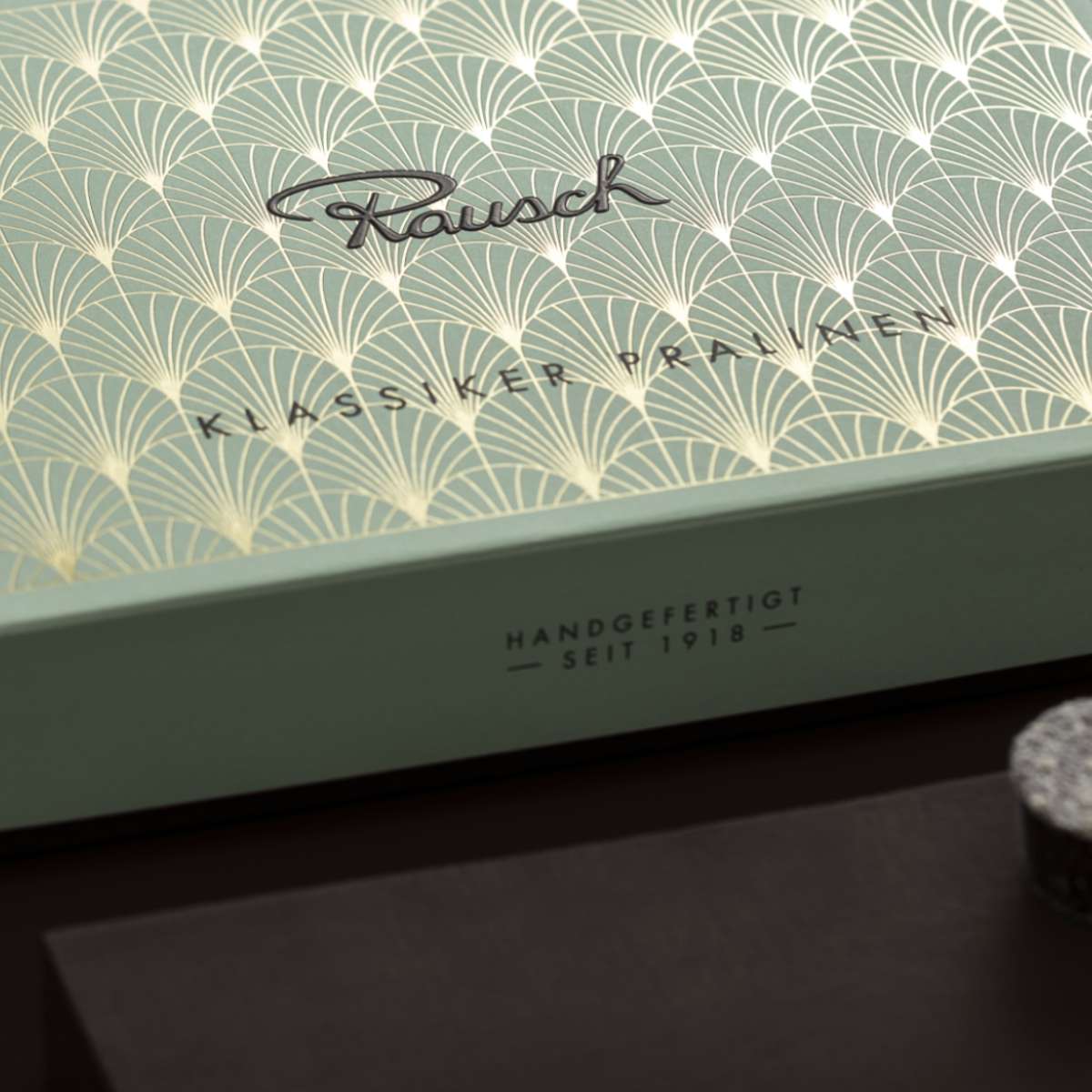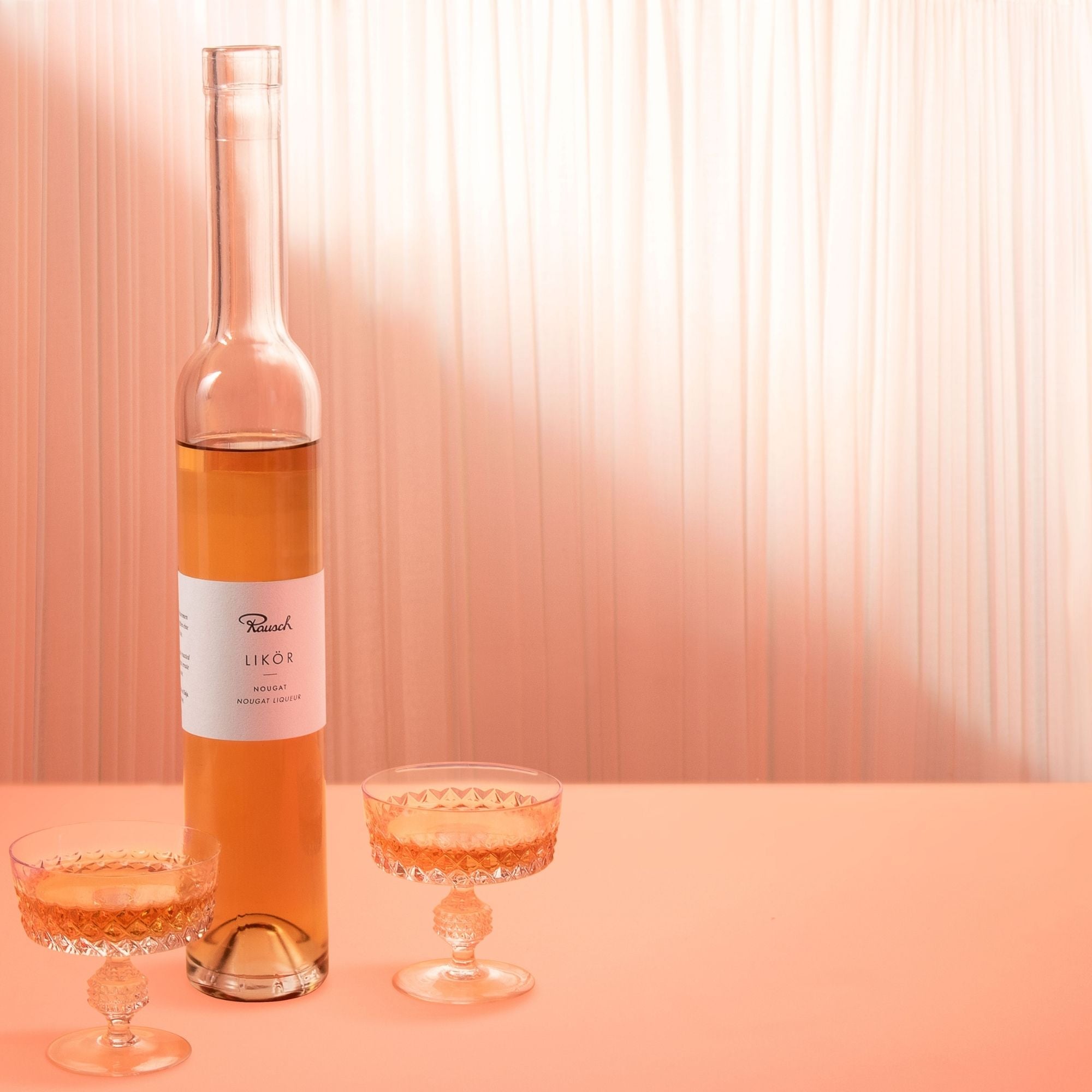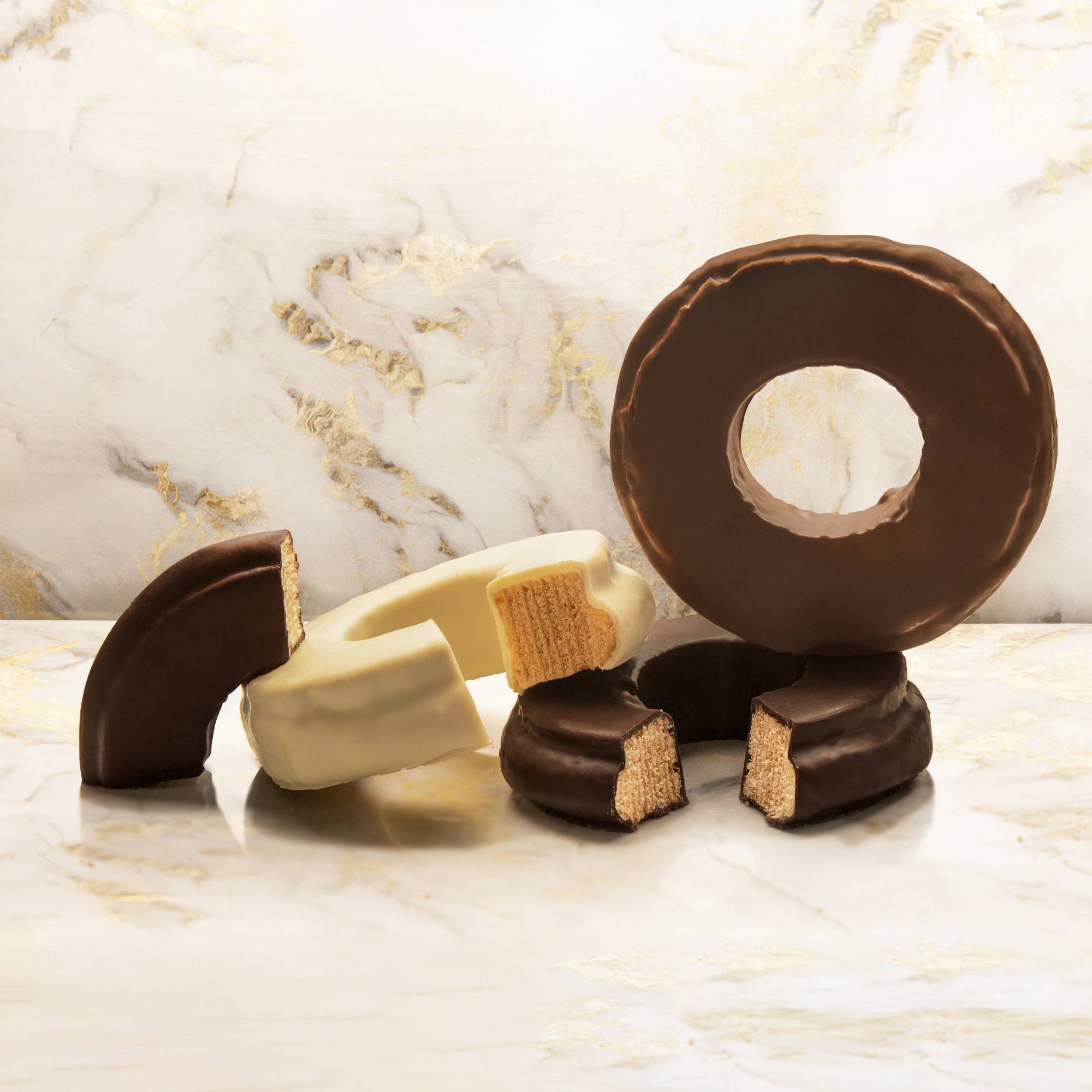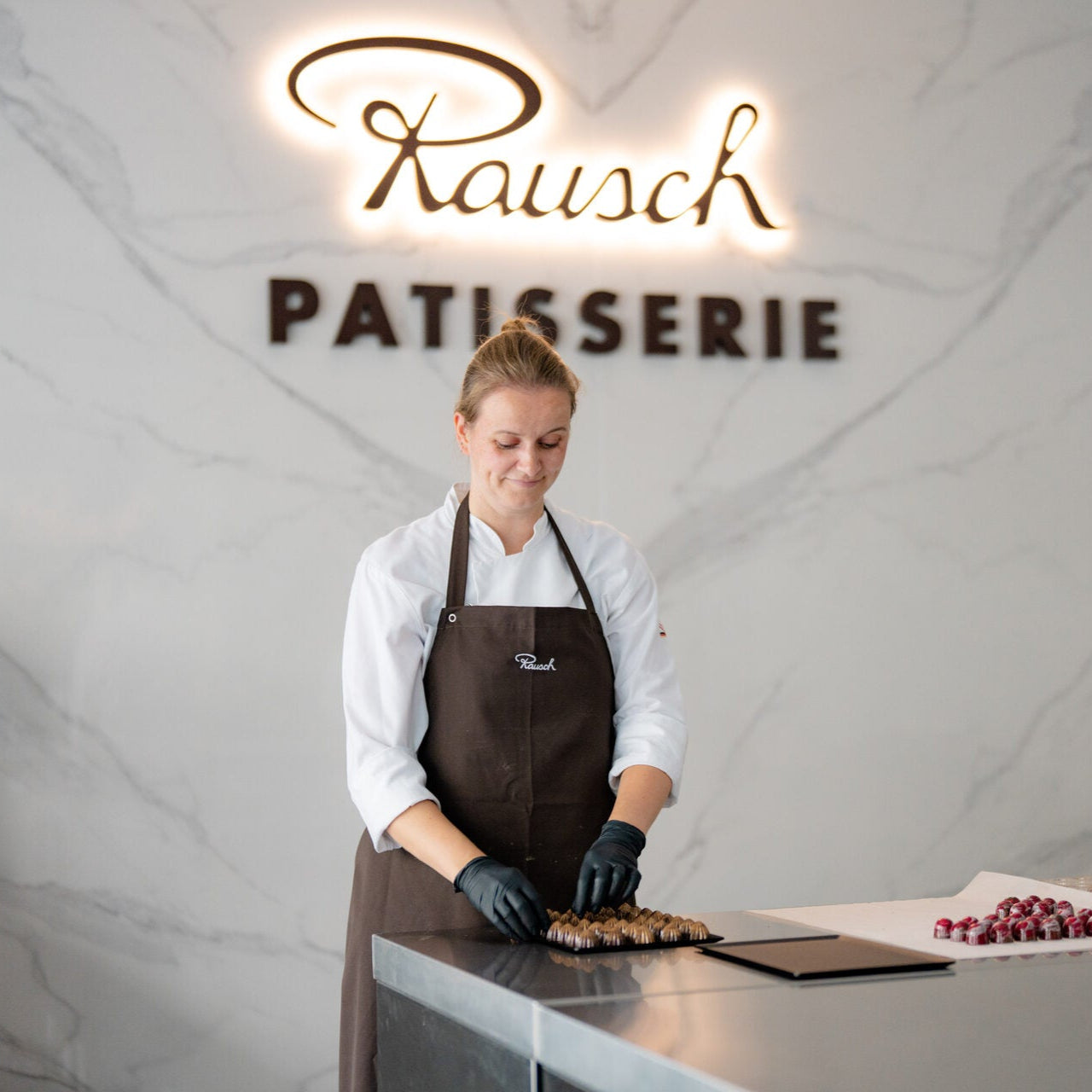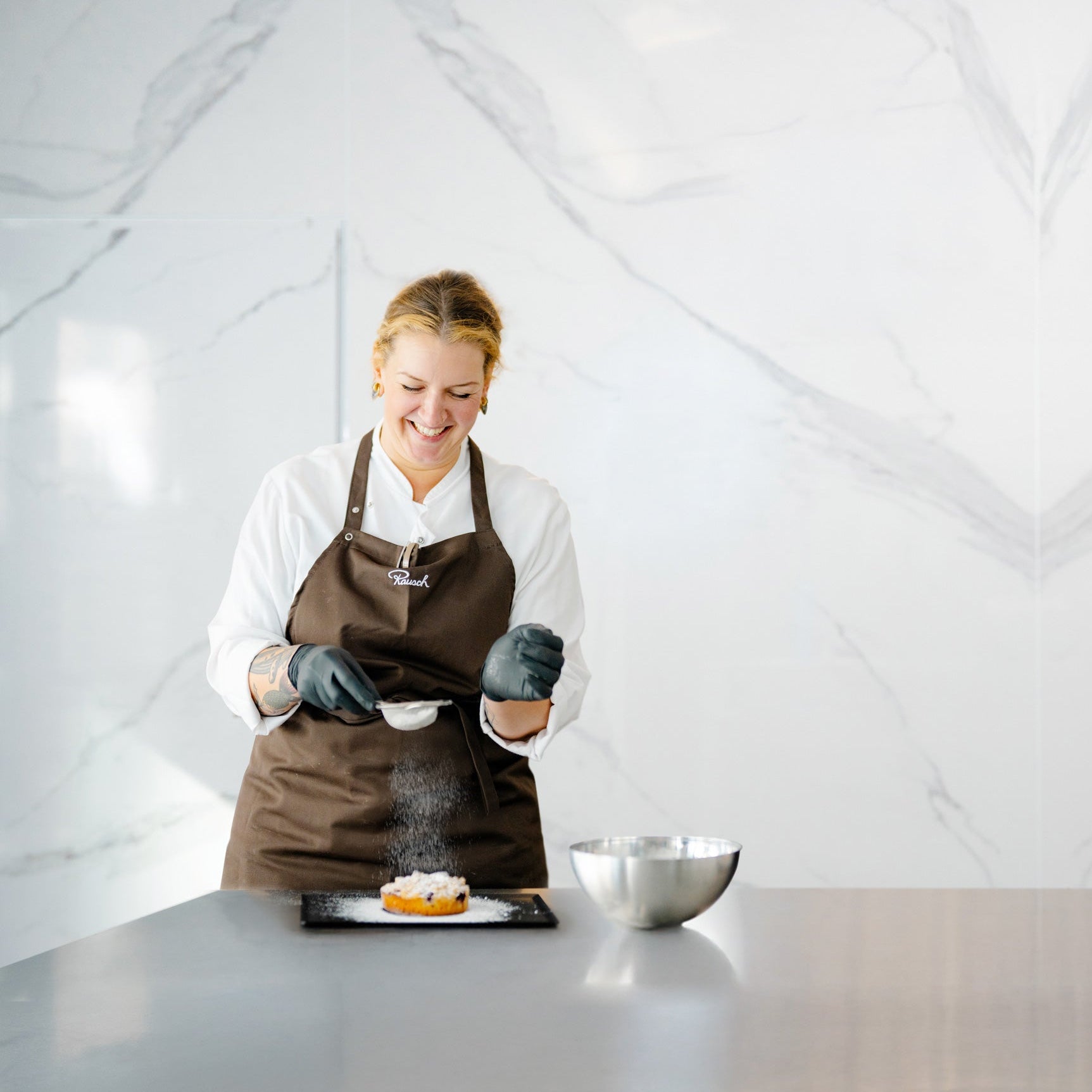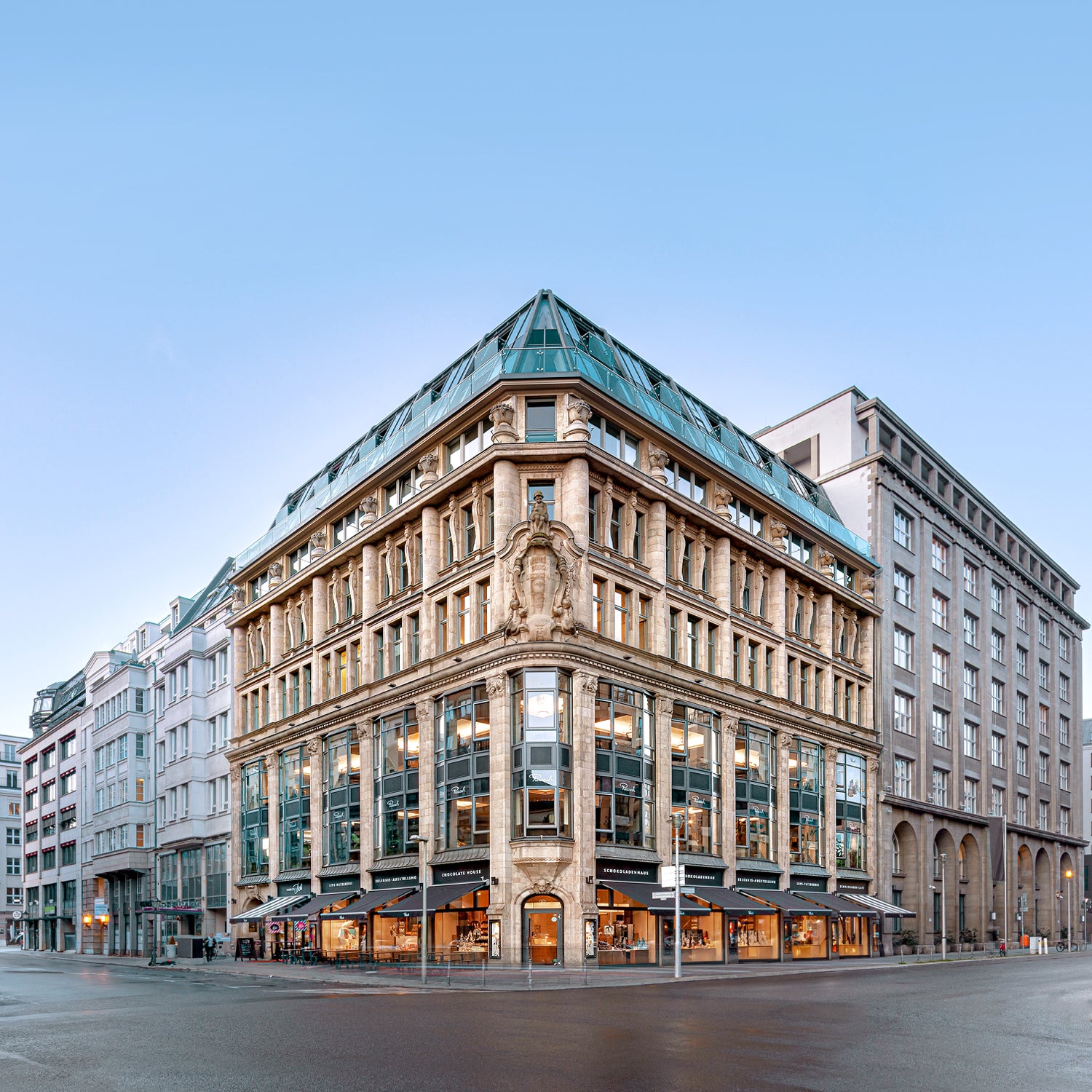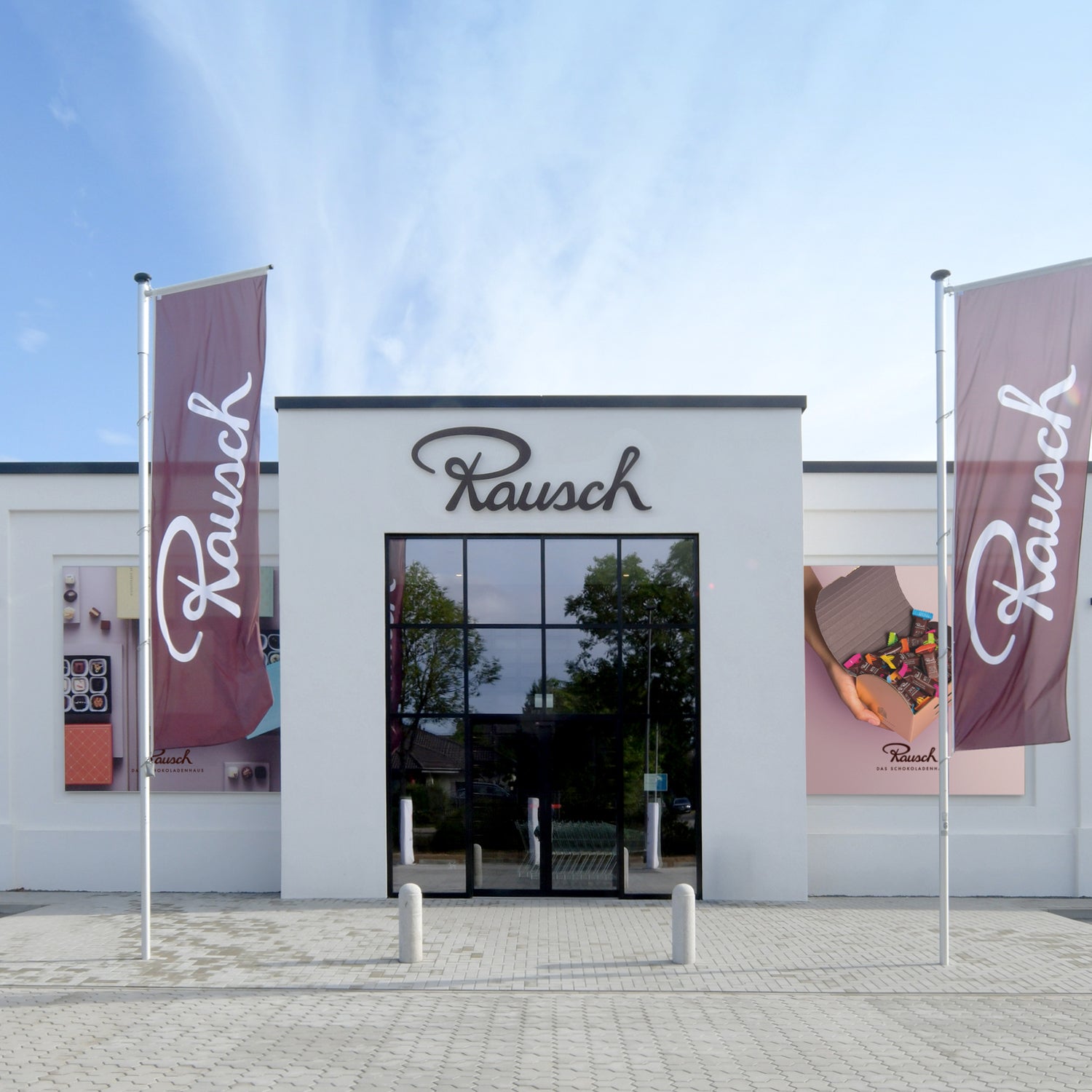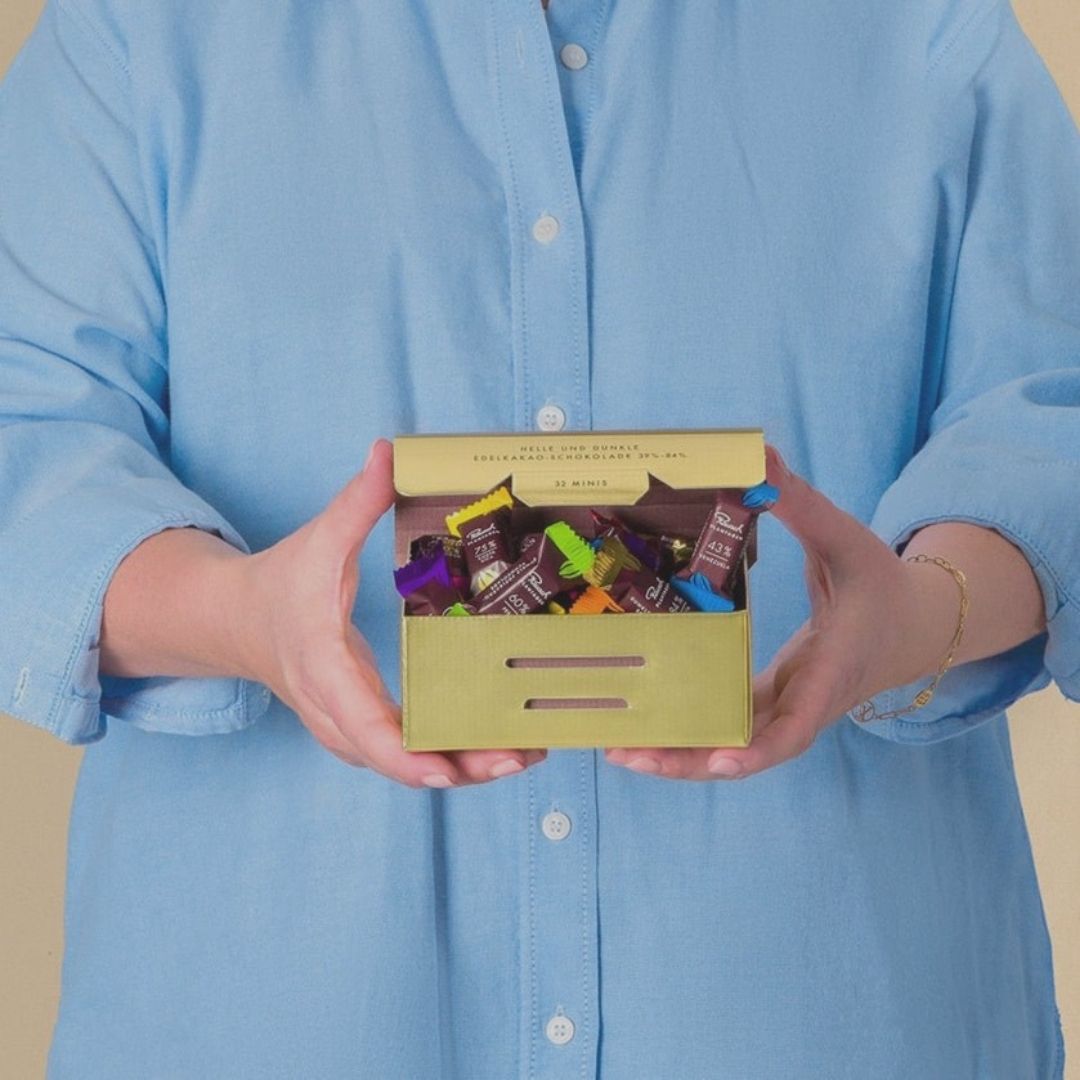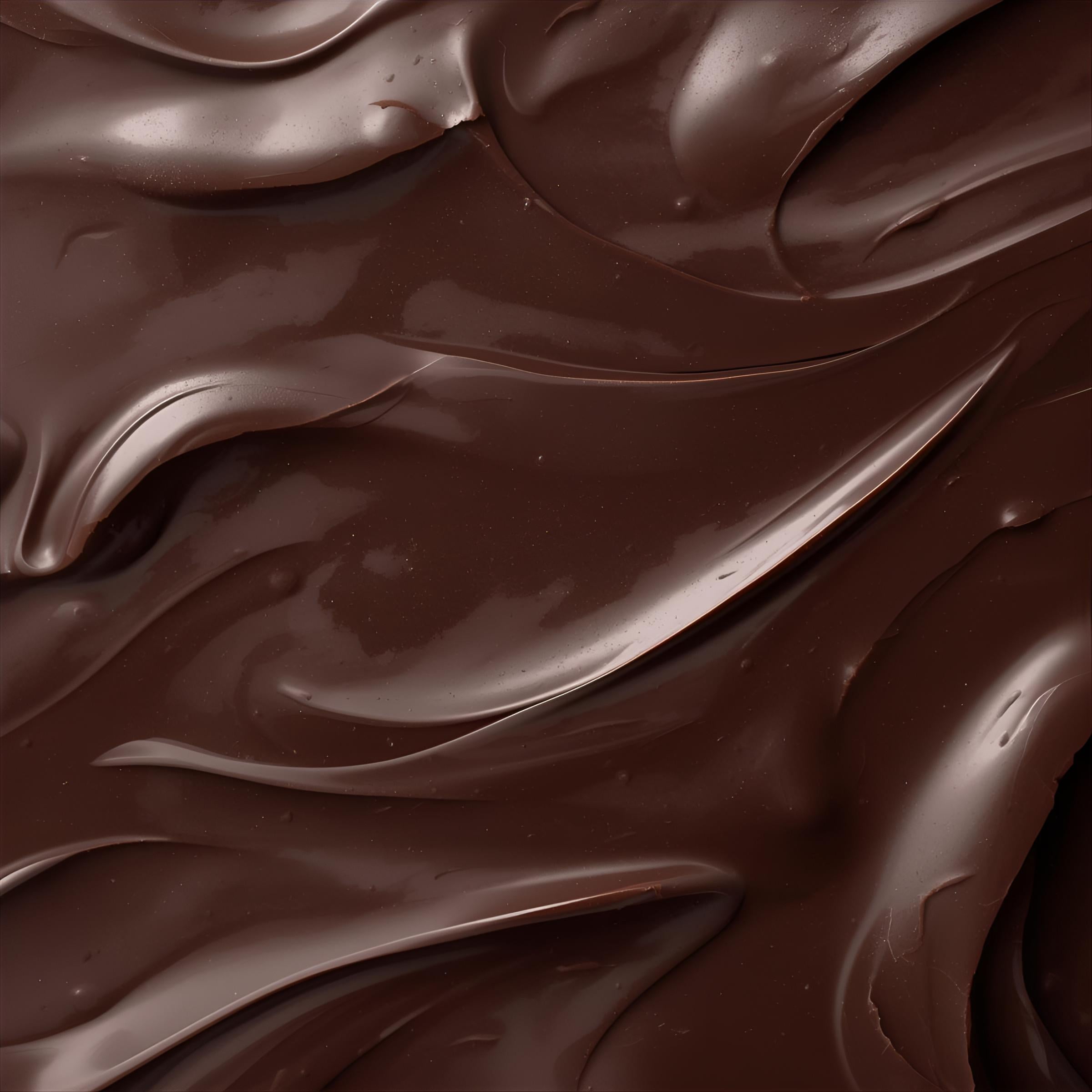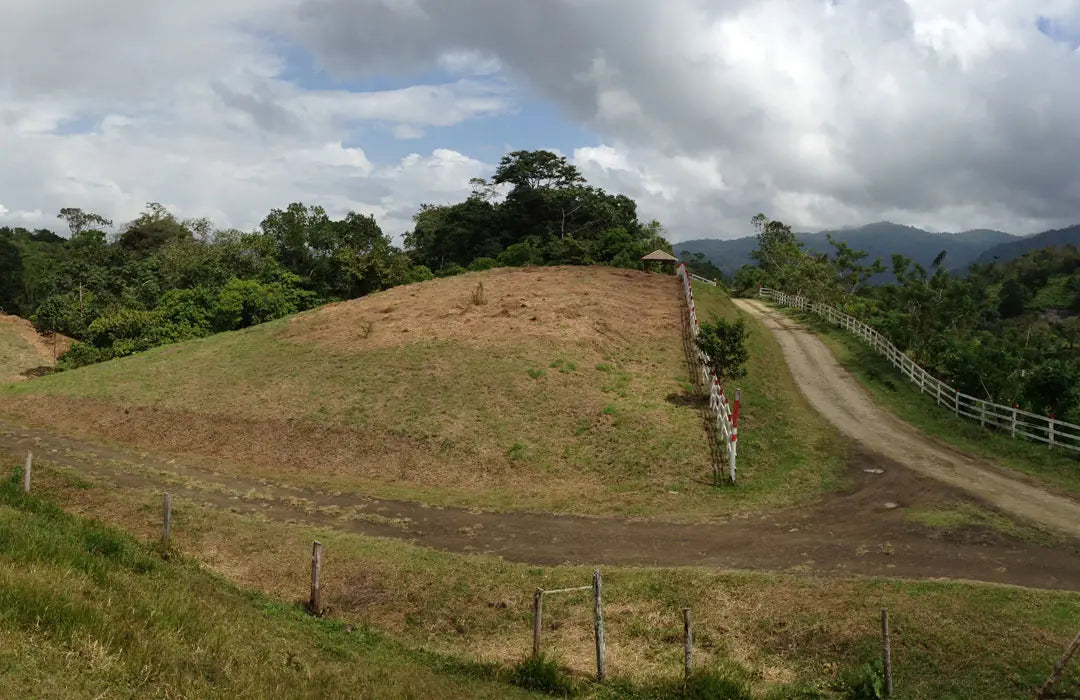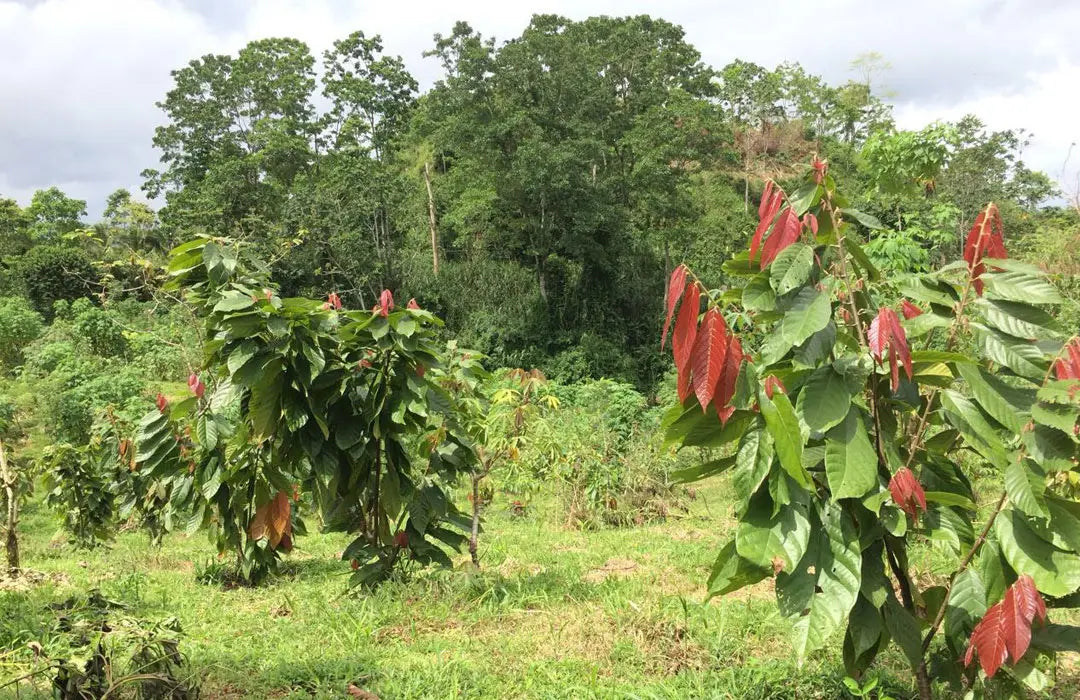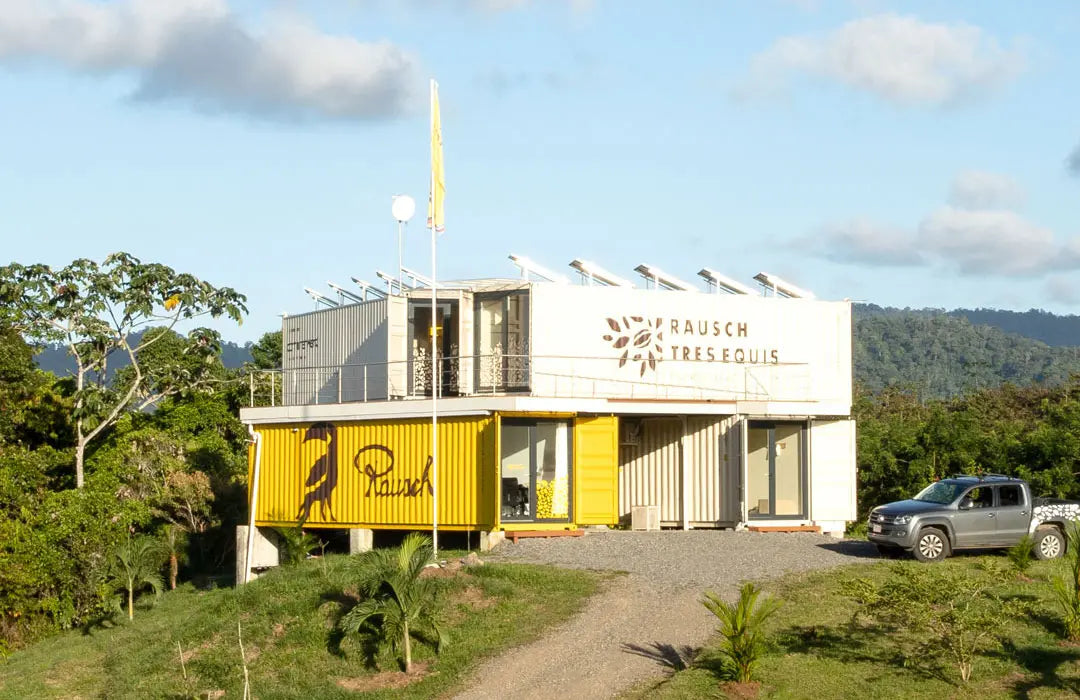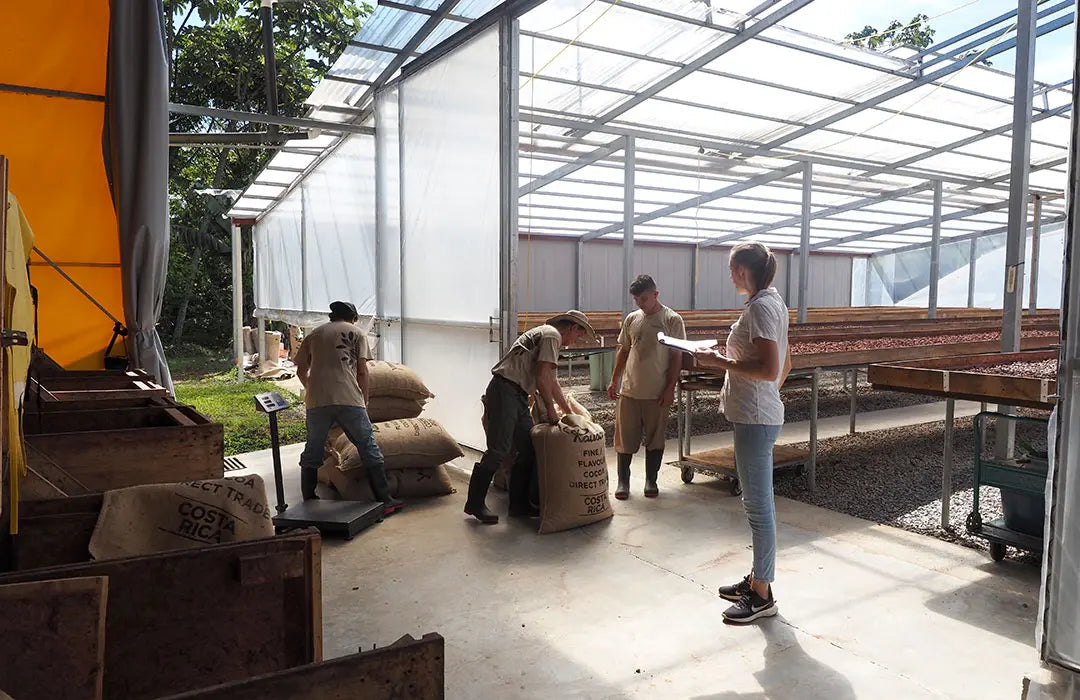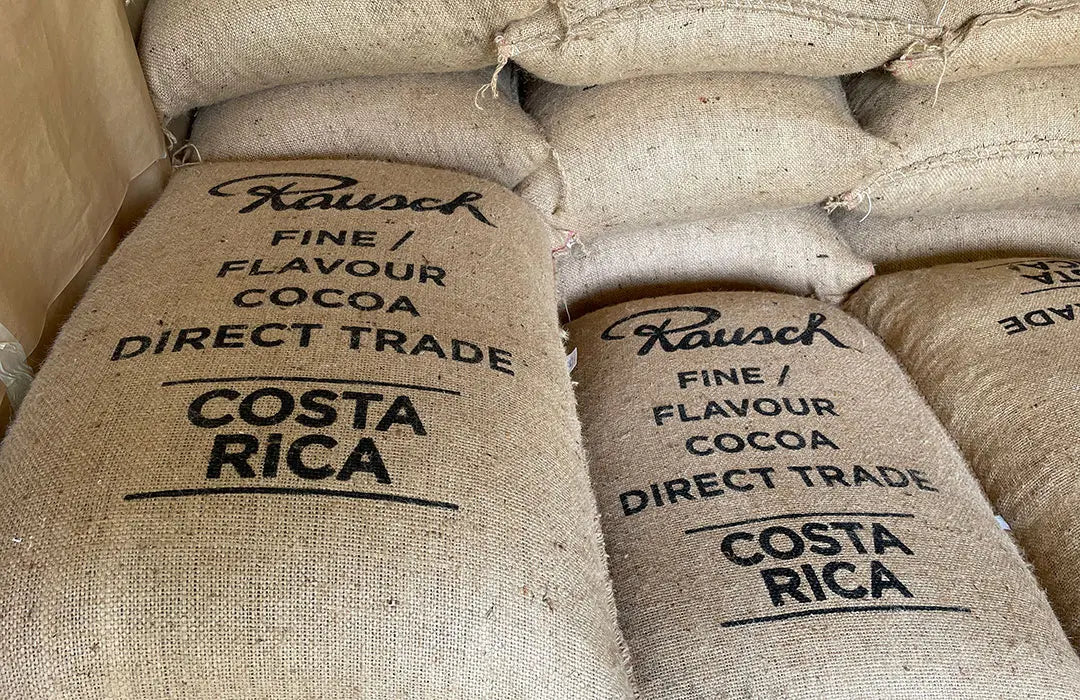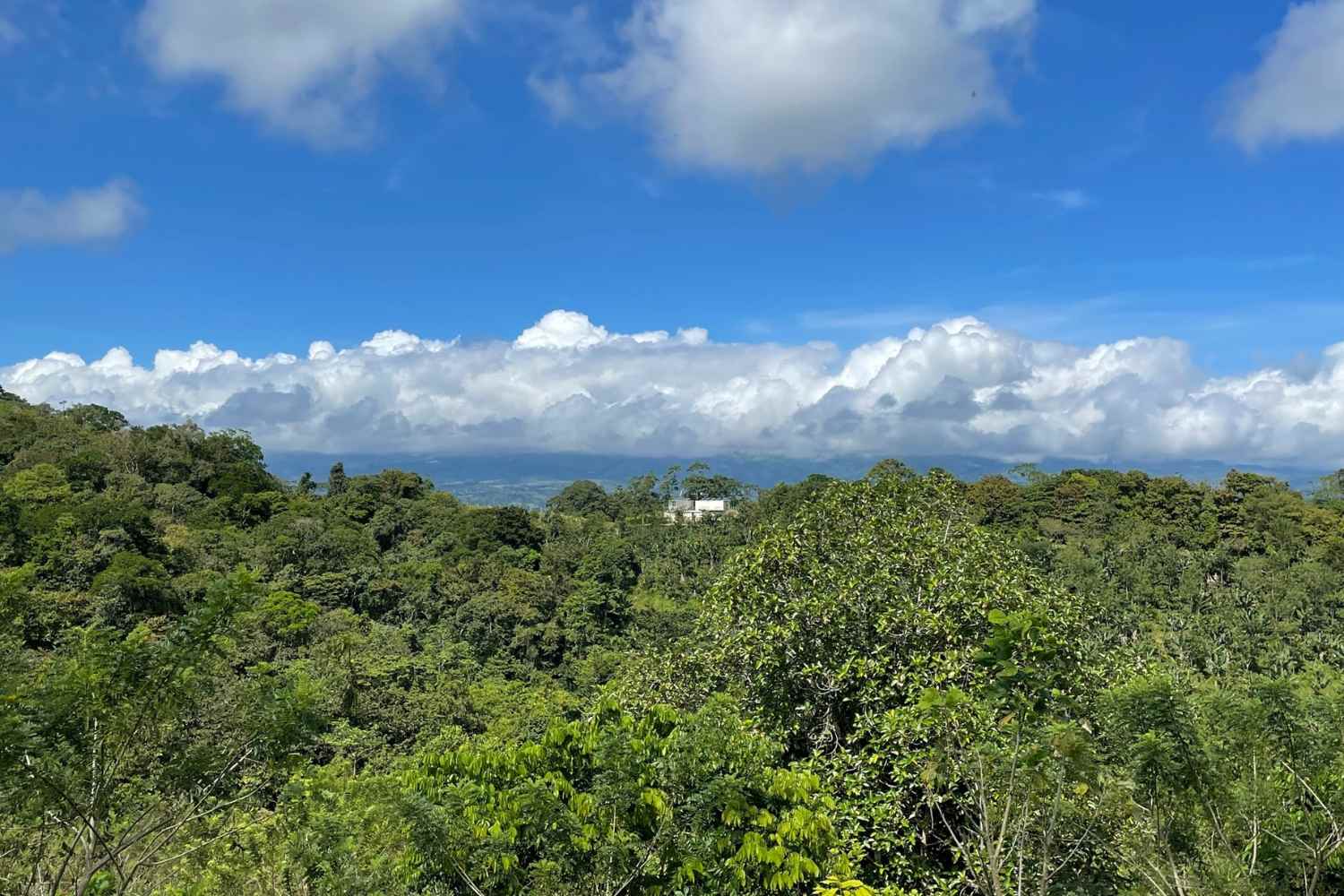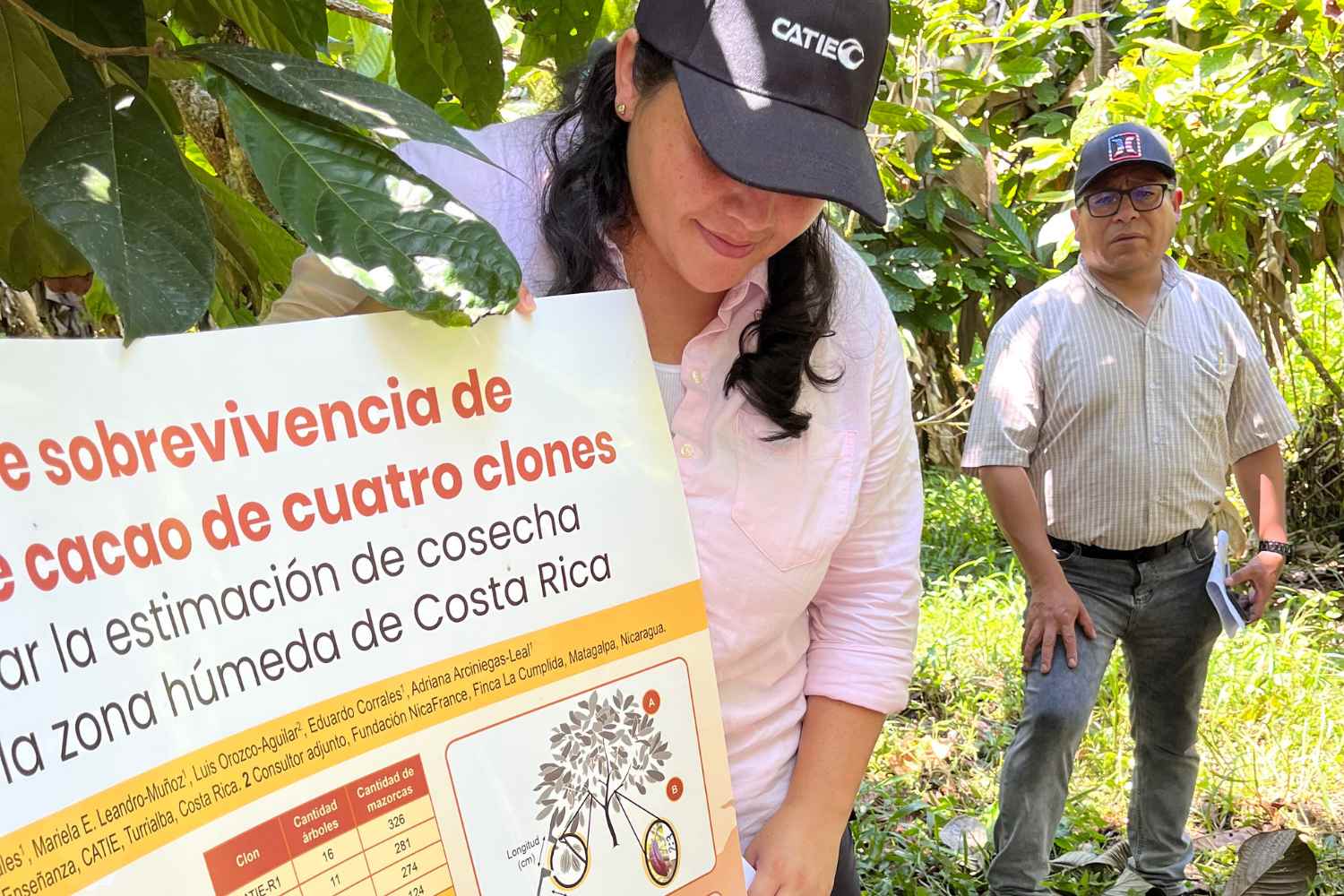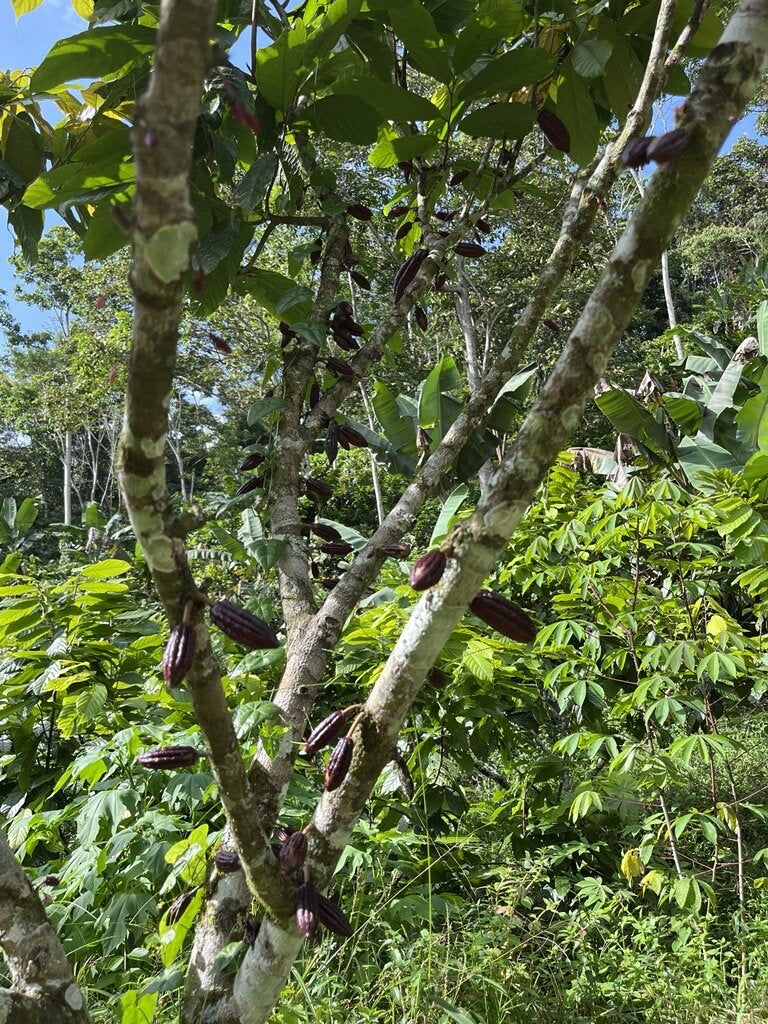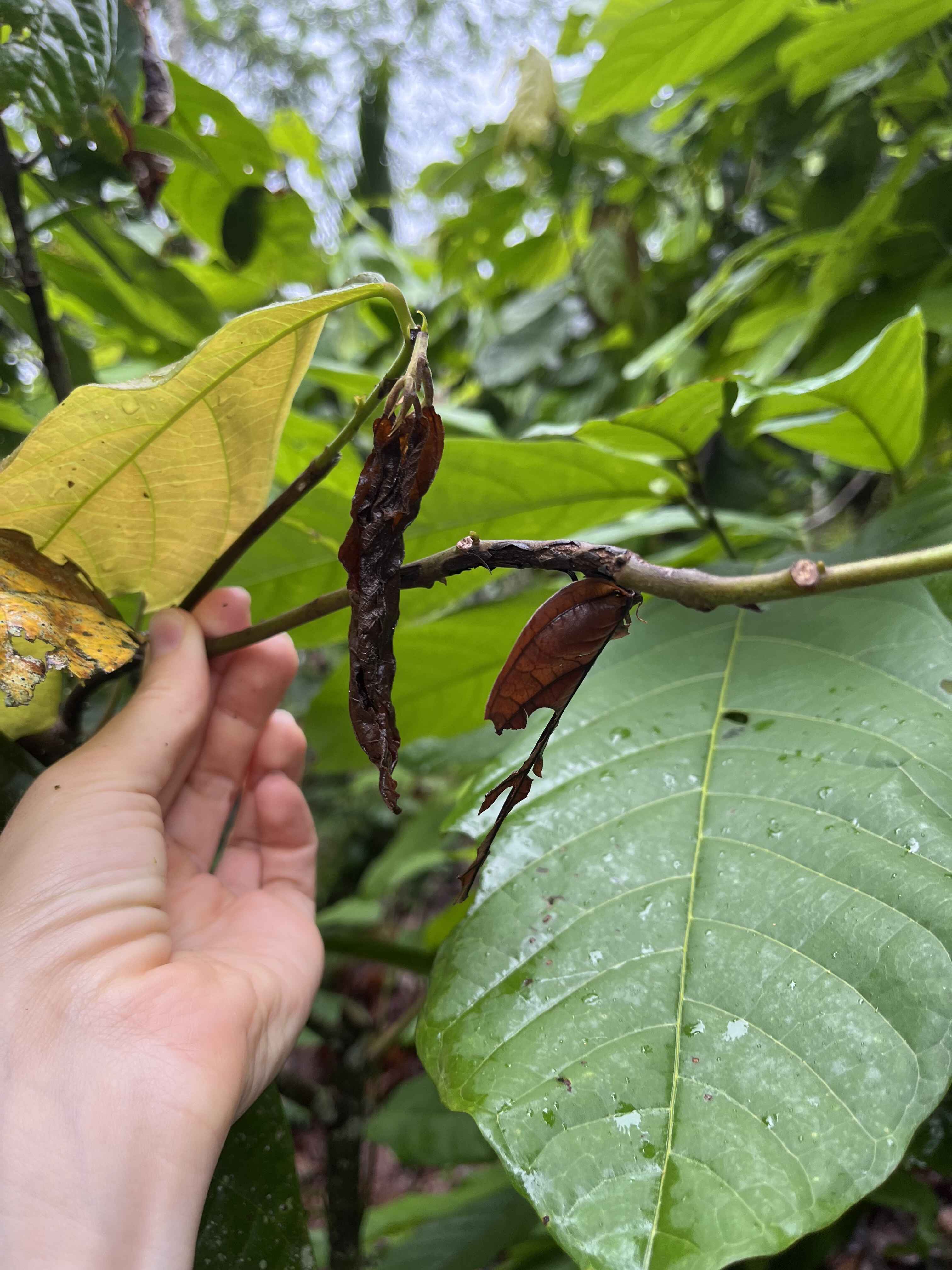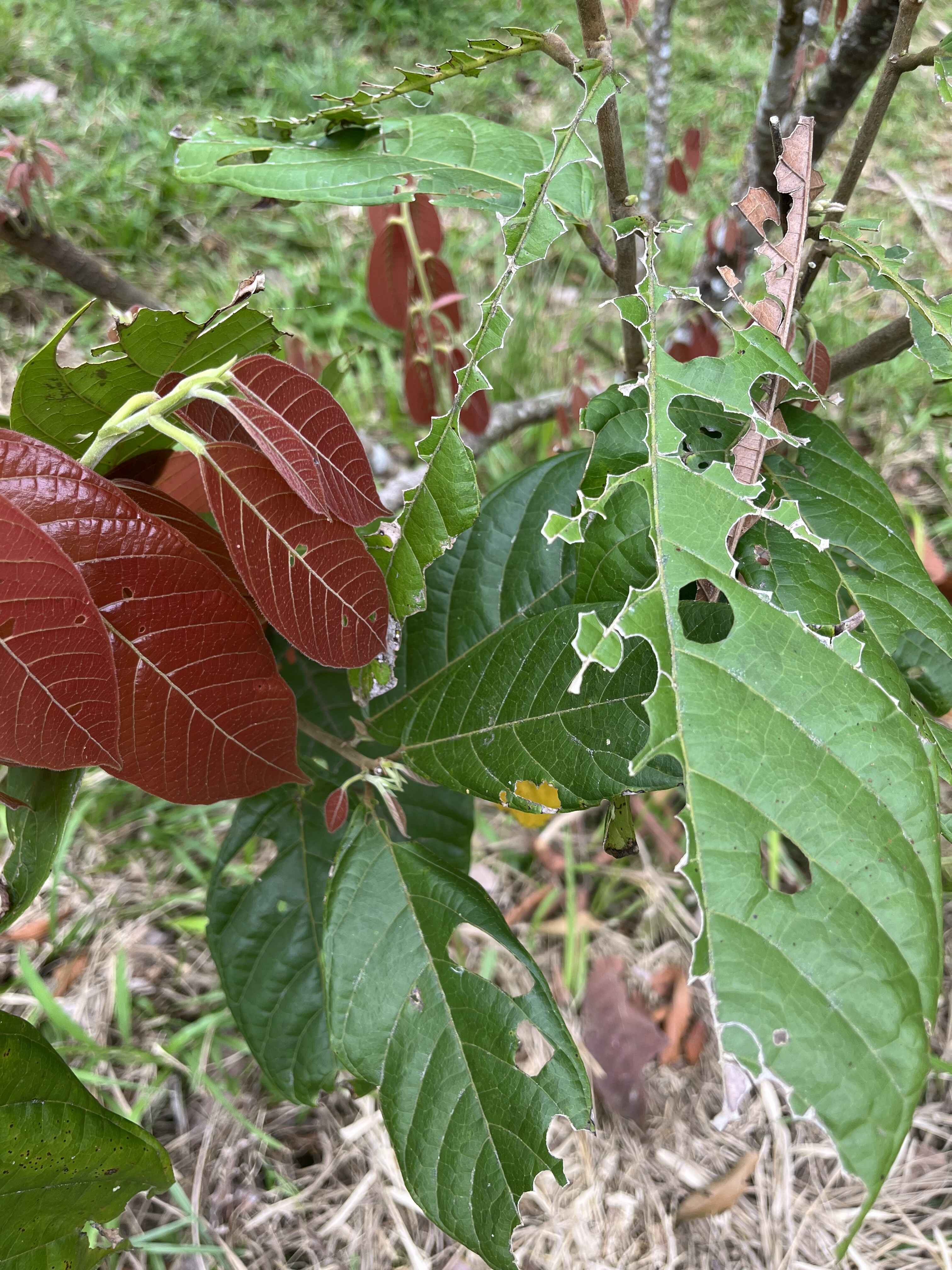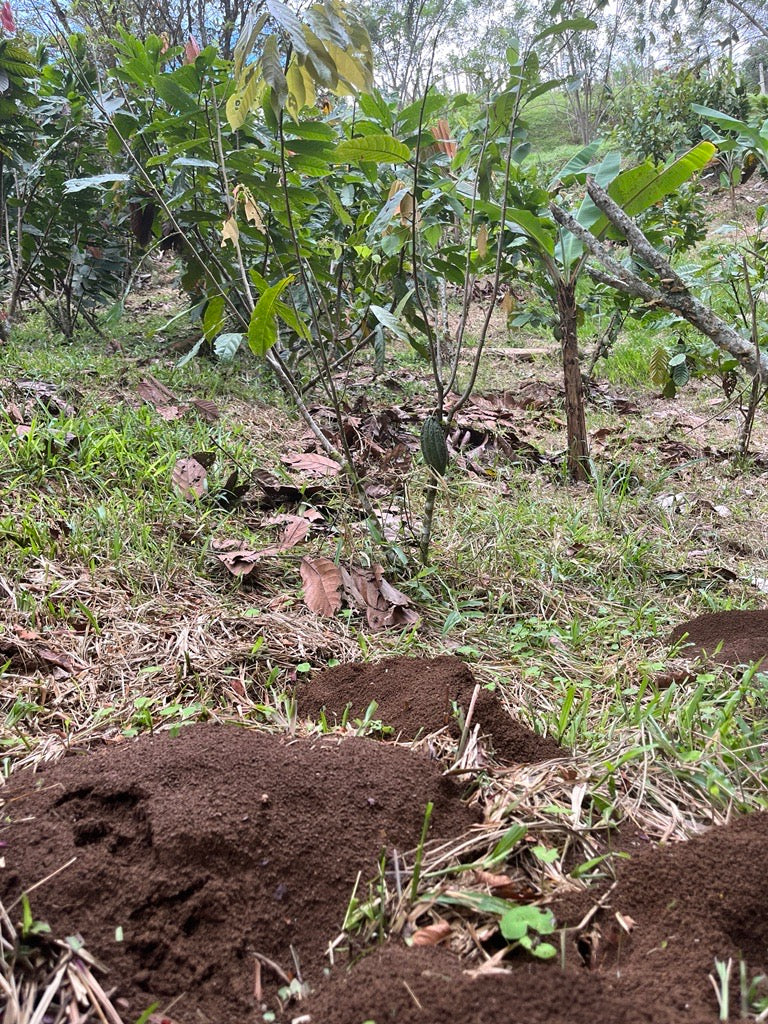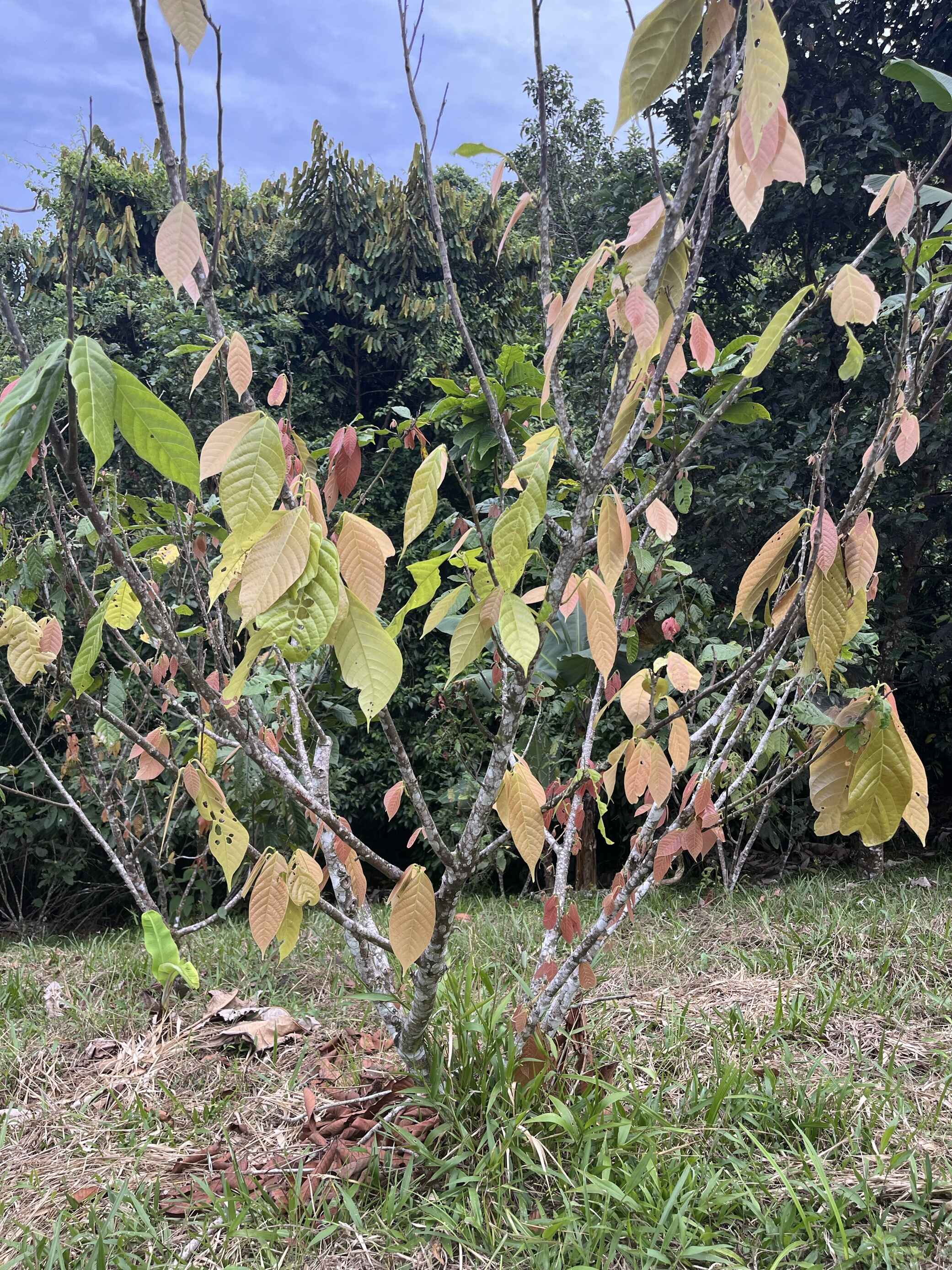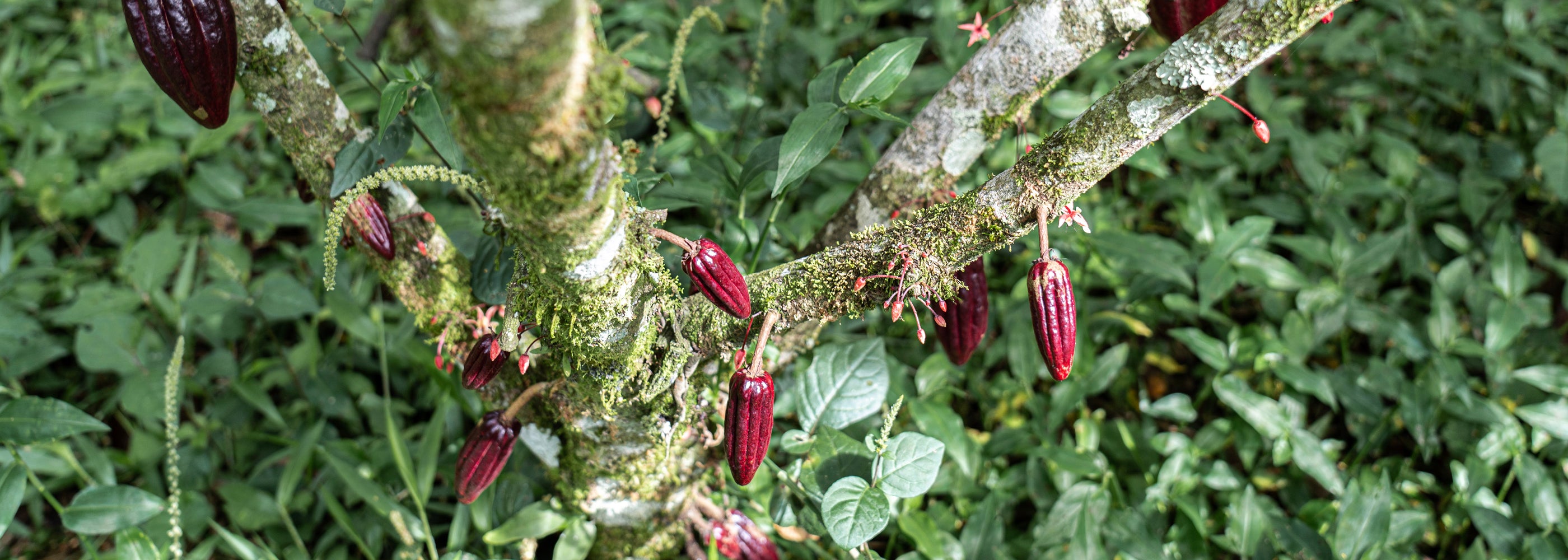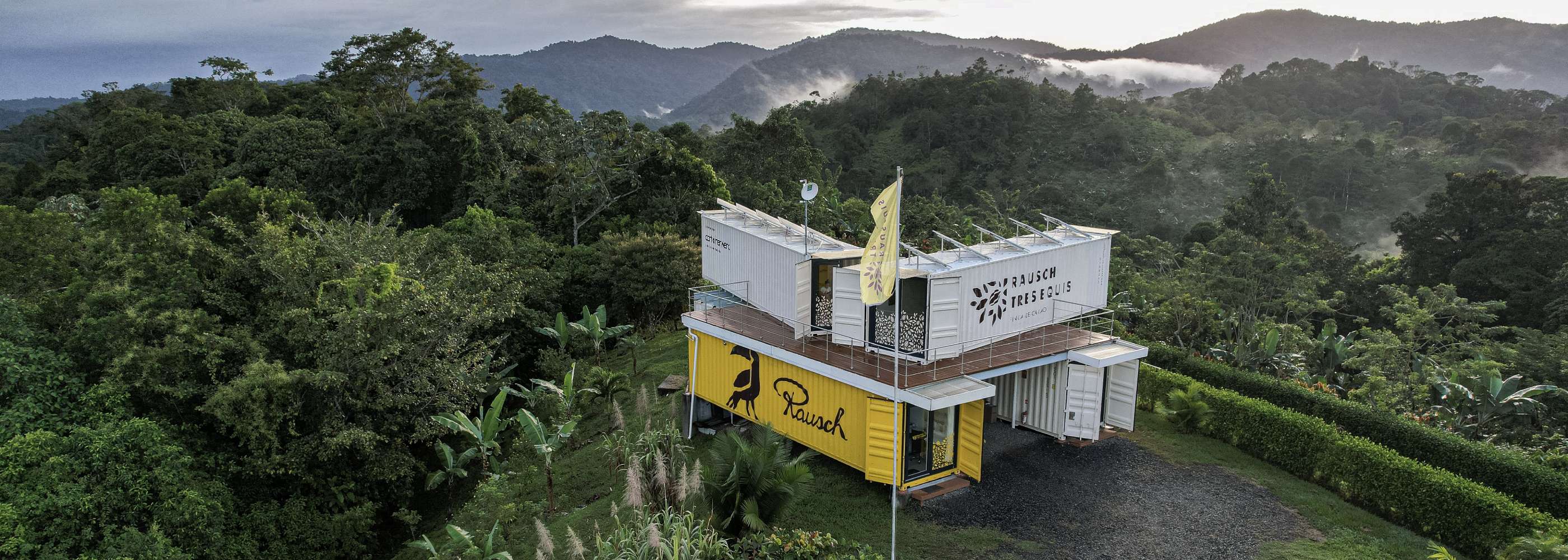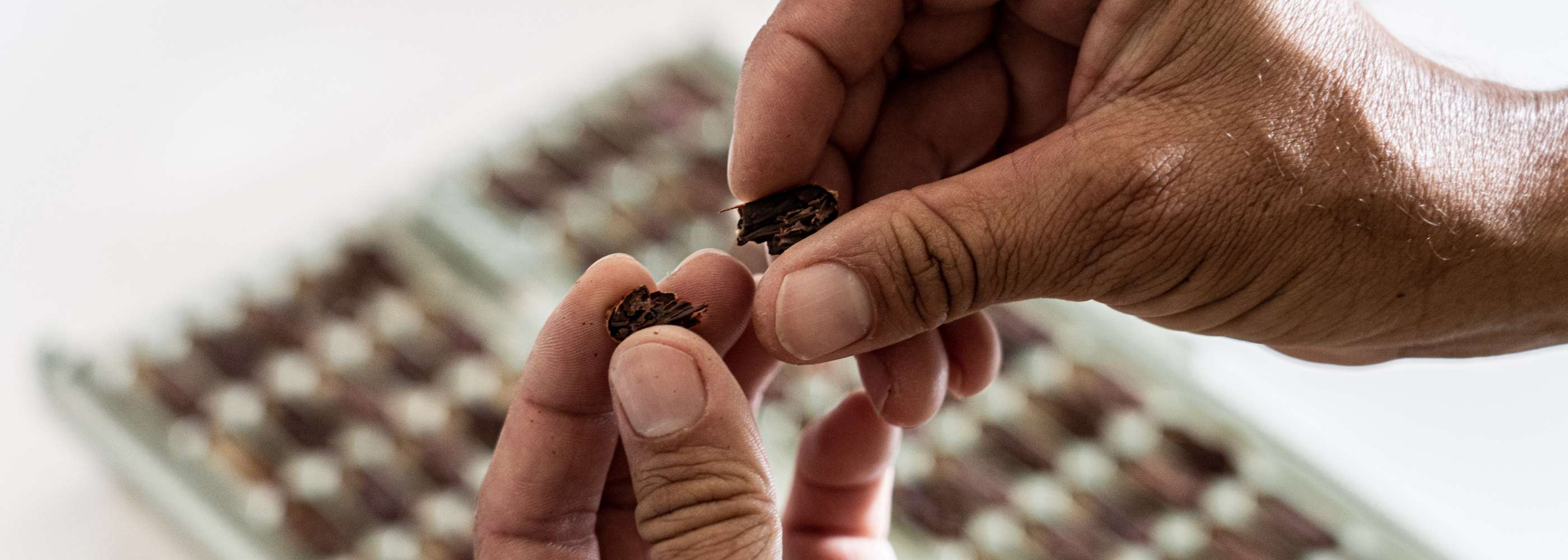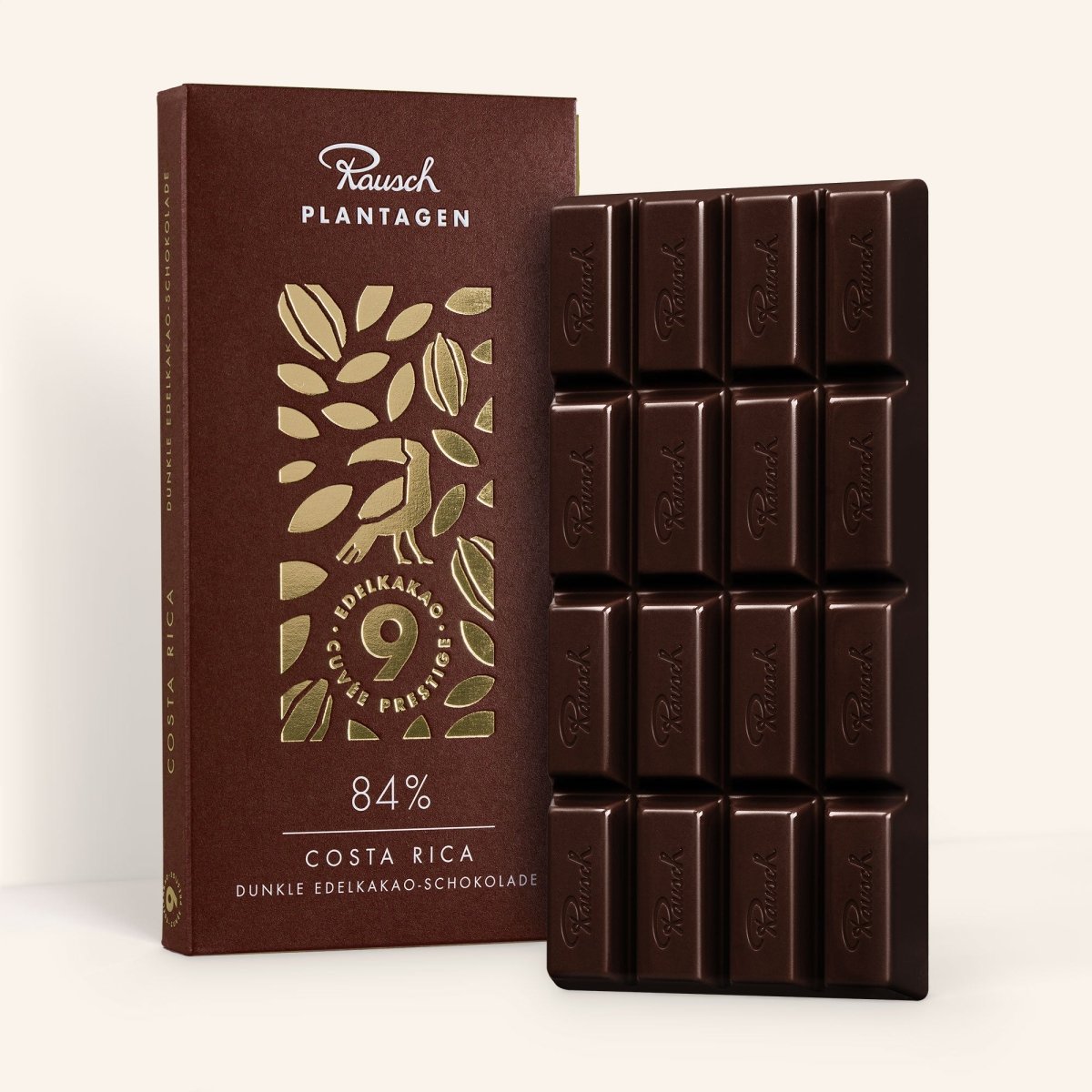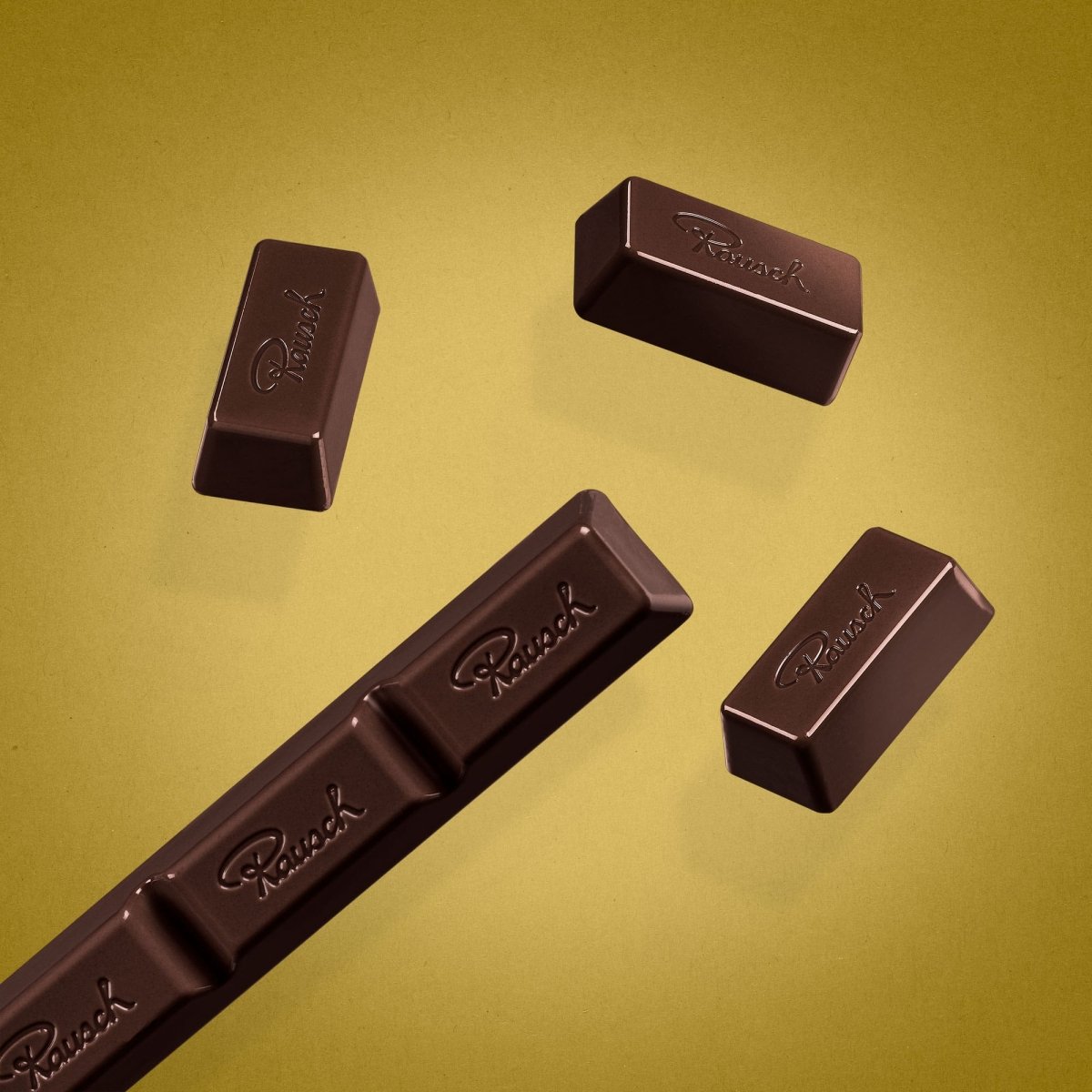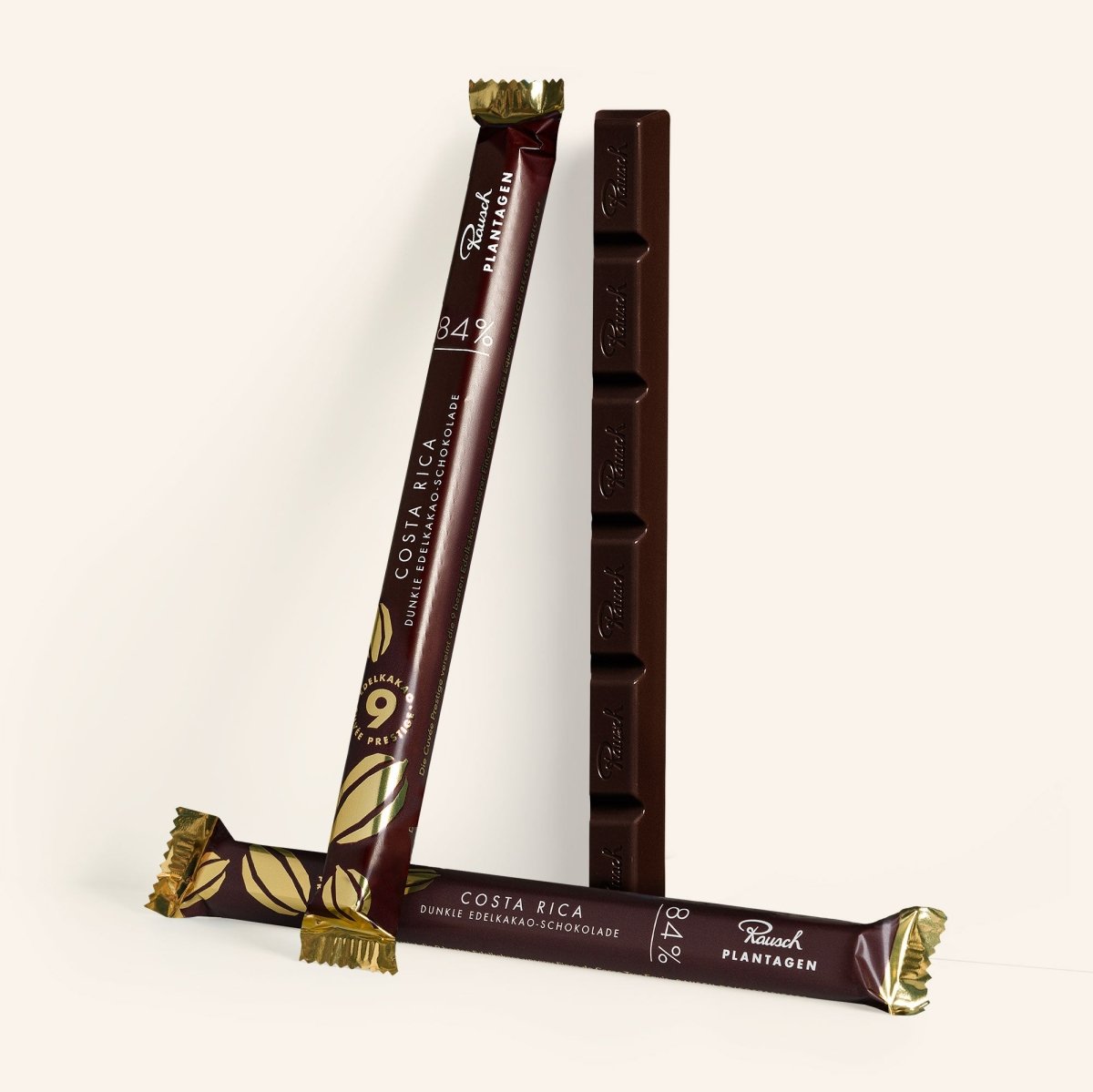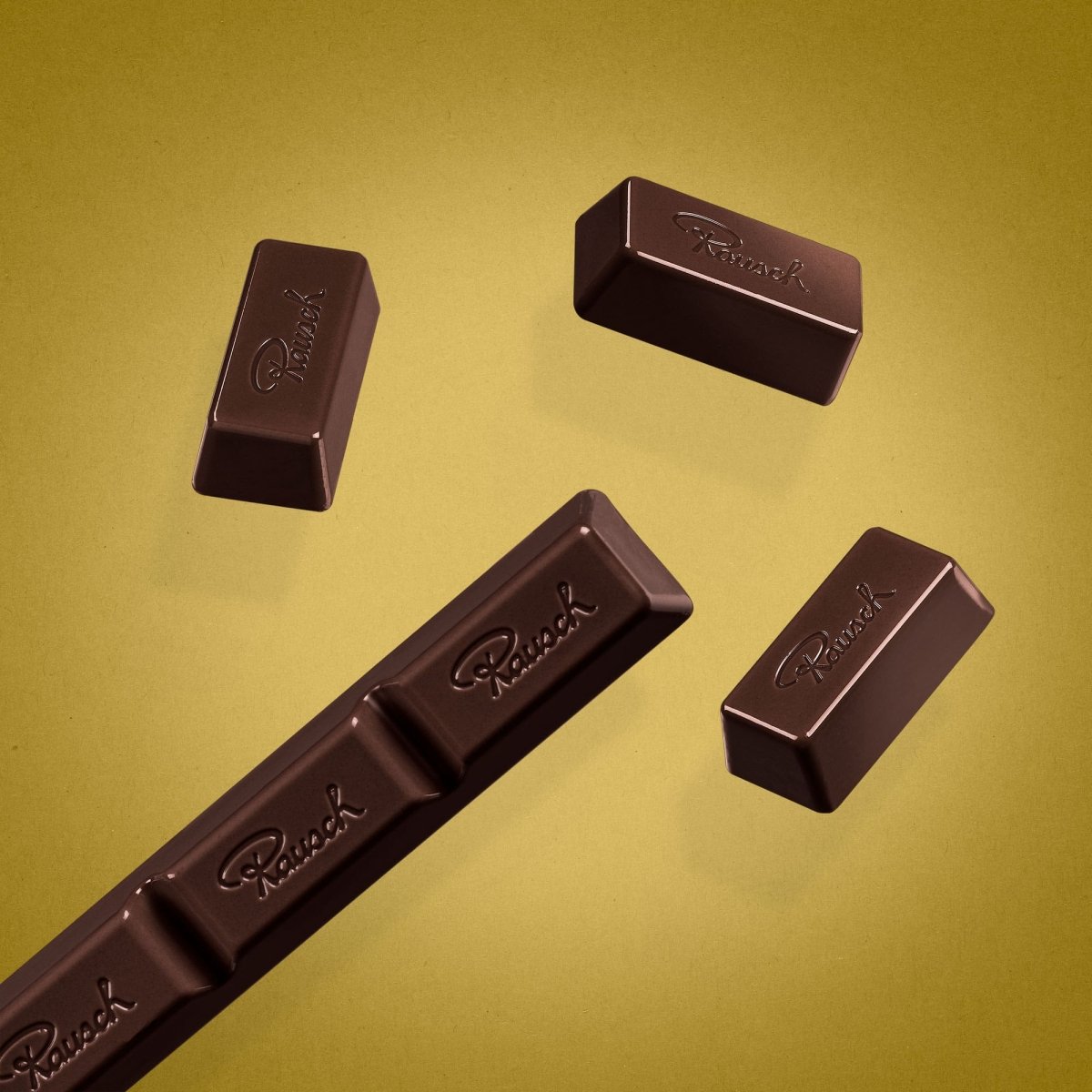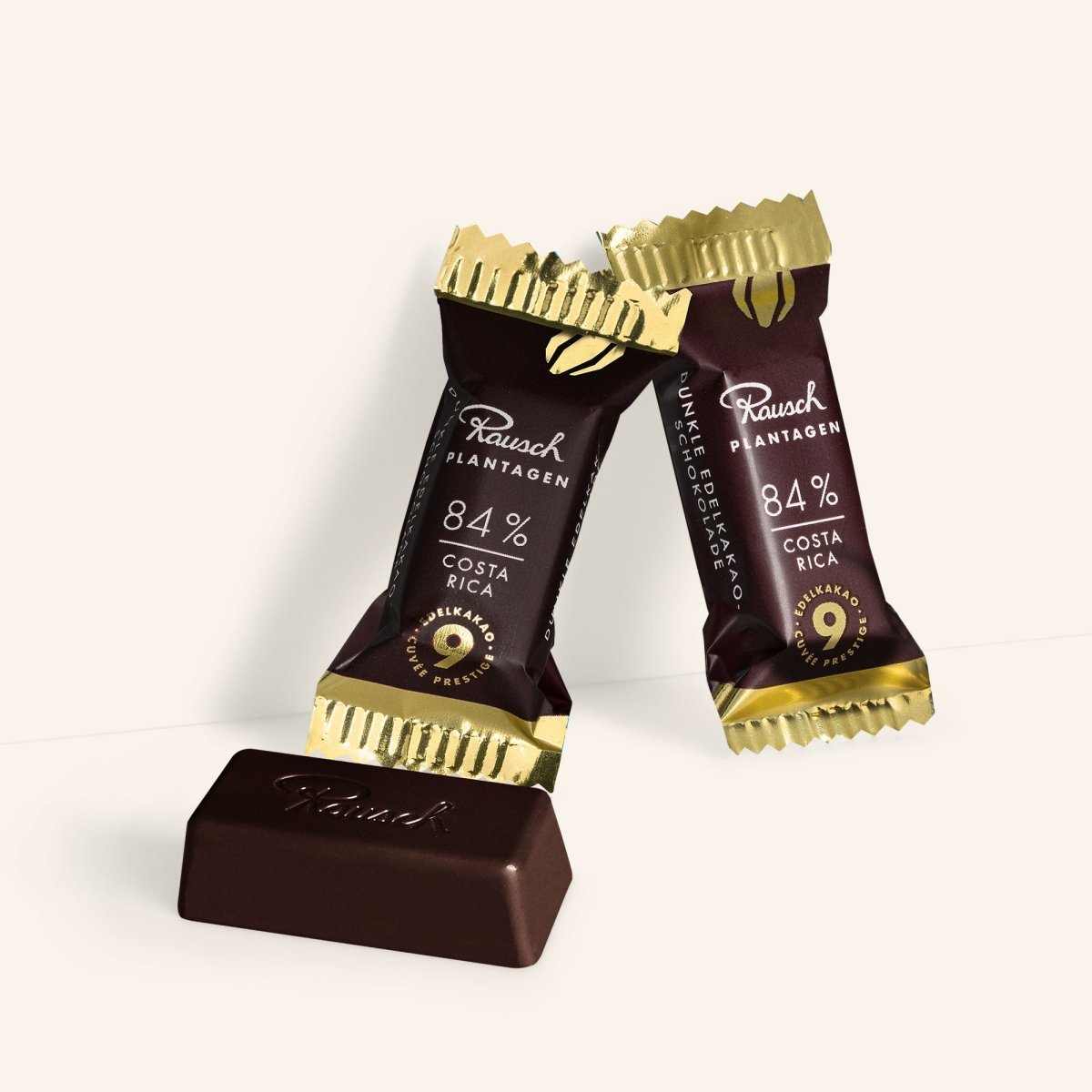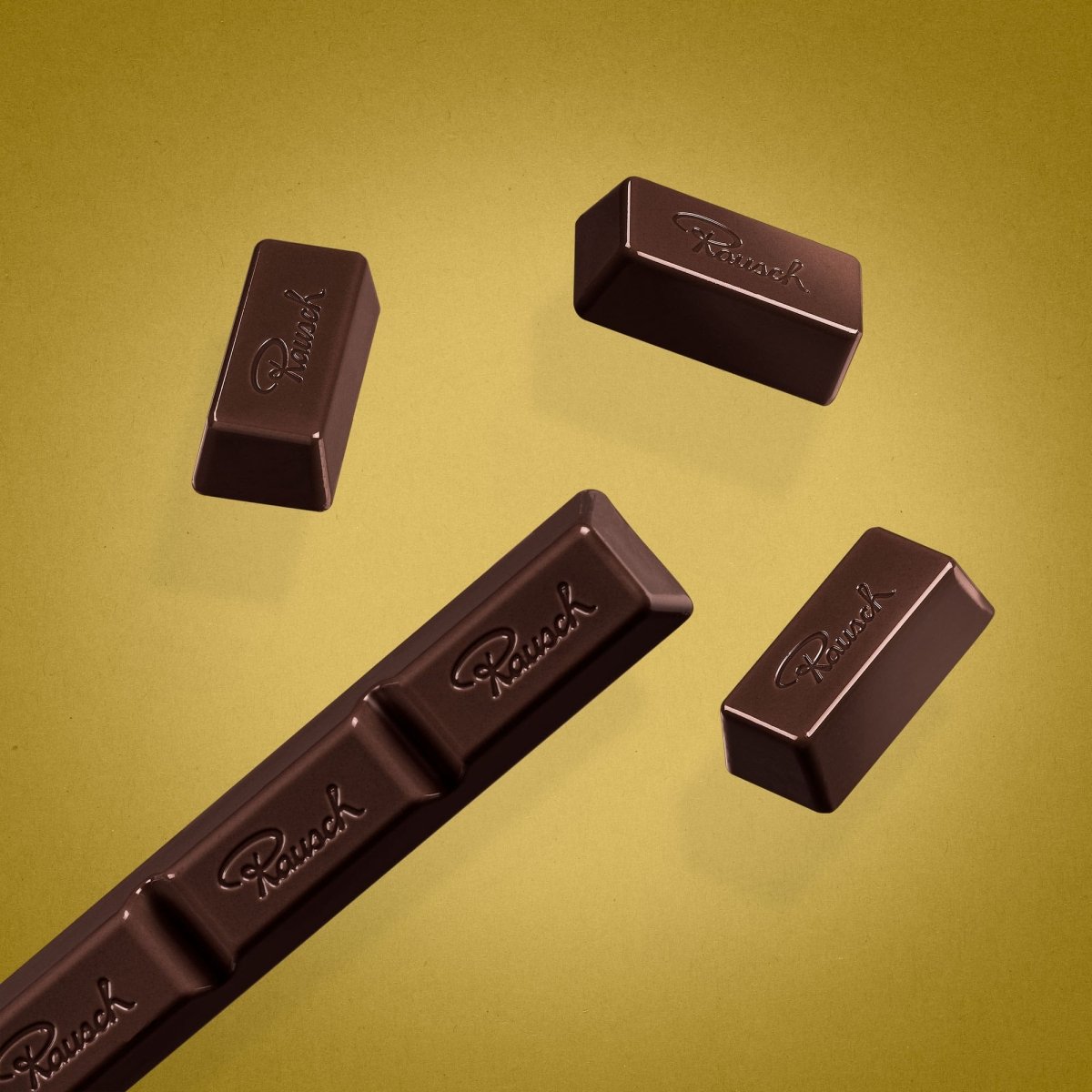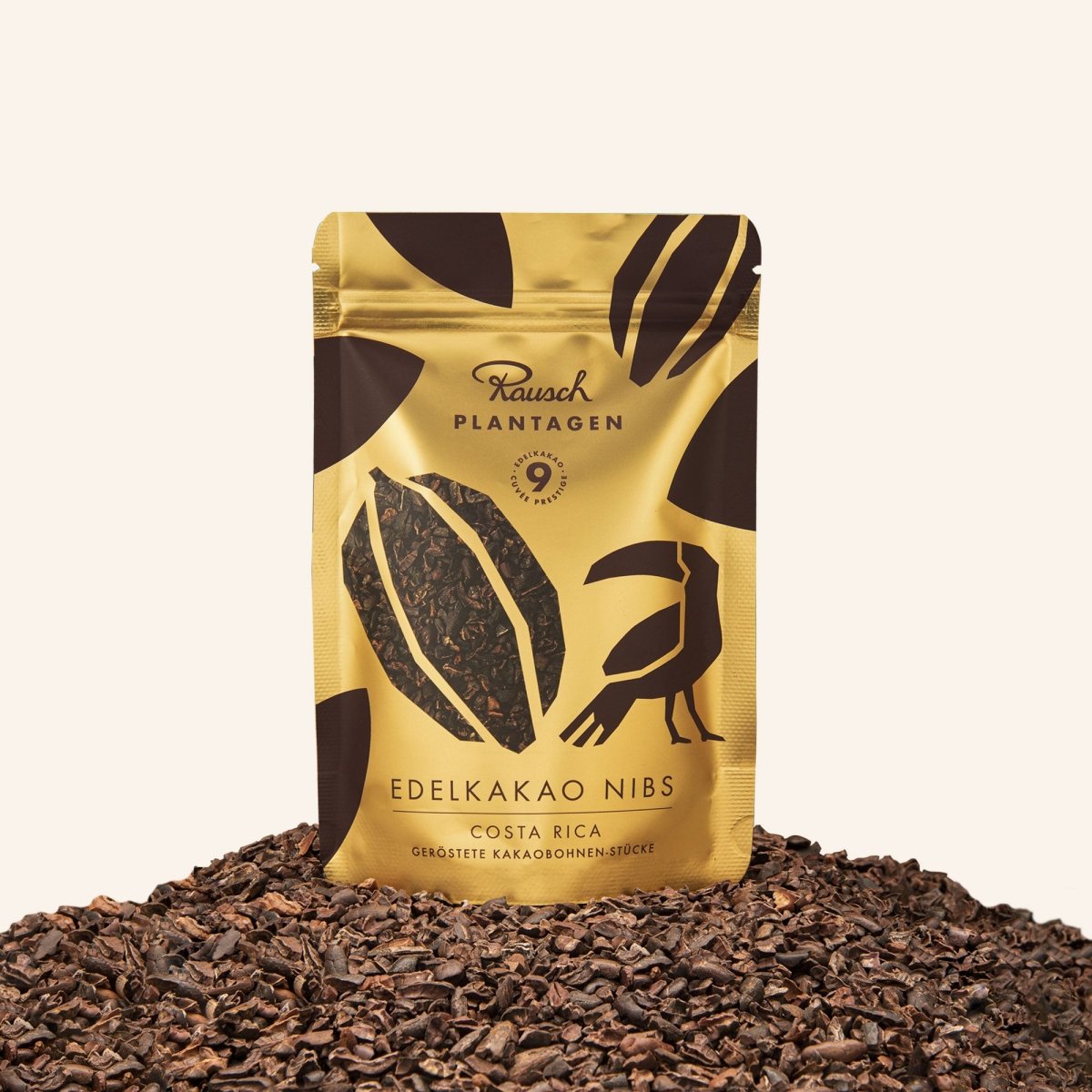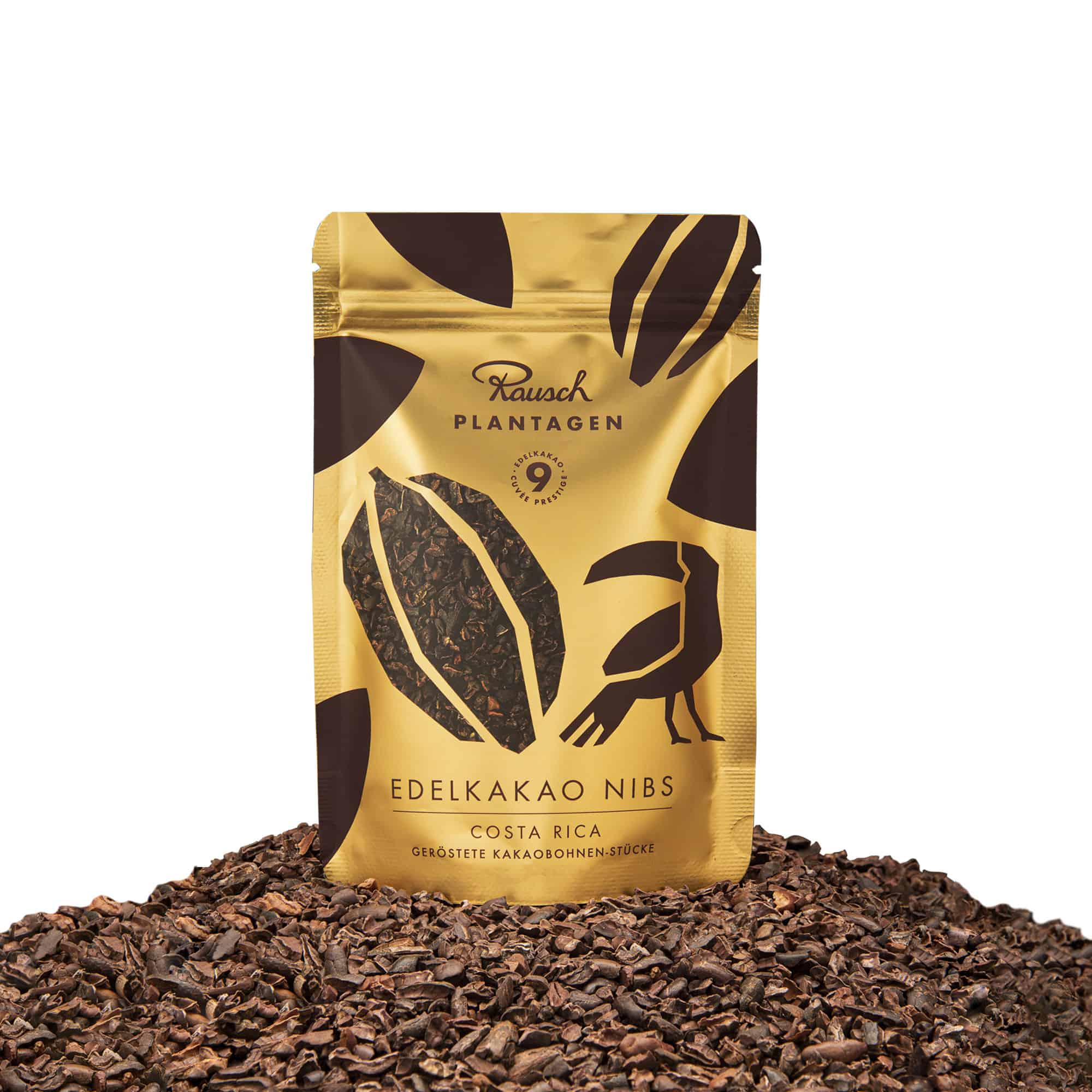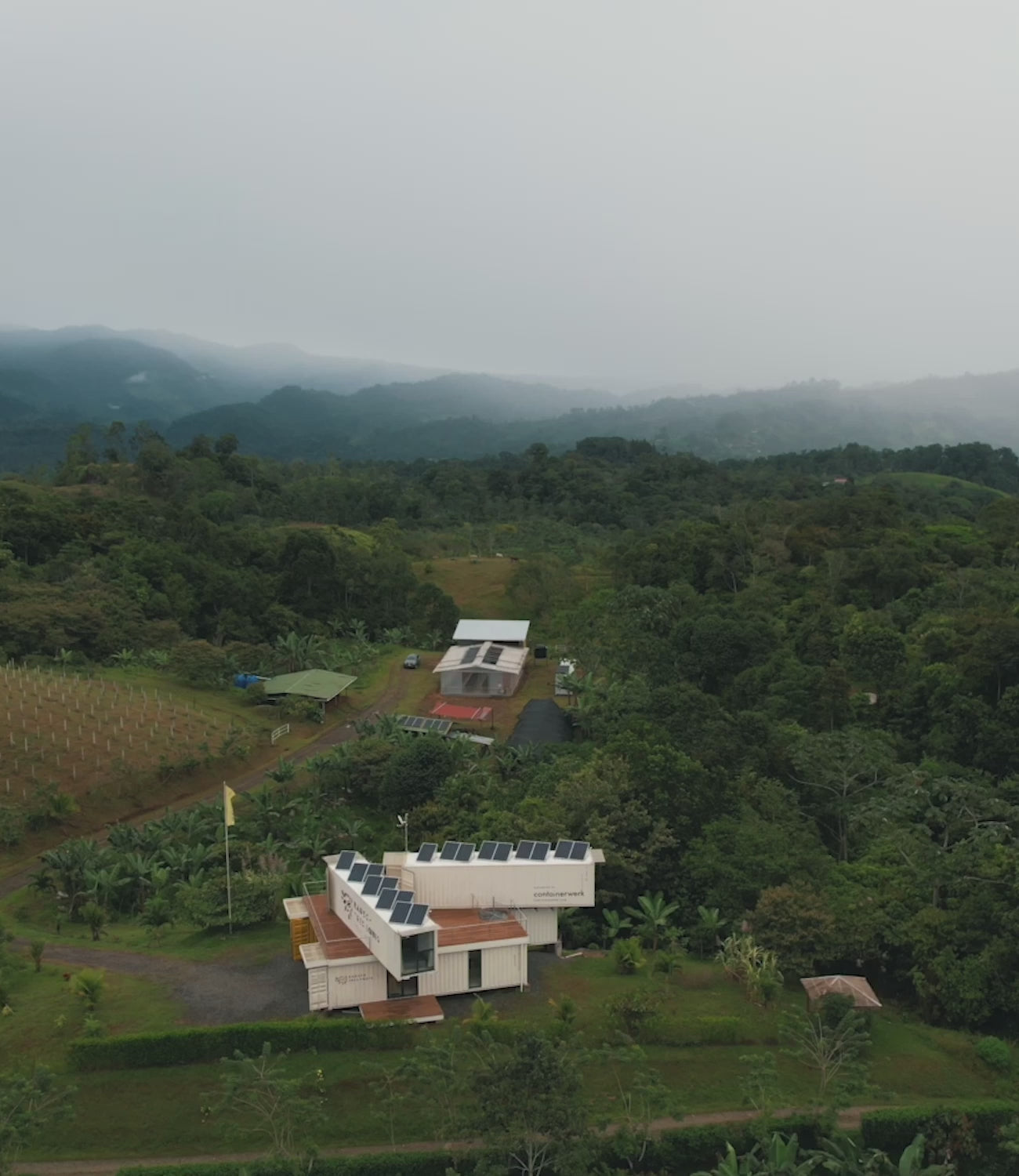
OUR HEART PROJECT
IN COSTA RICA
The Rausch fine flavour cocoa farm Tres Equis - Finca de Cacao in Costa Rica combines sustainable agroforestry systems with top cocoa quality. A diverse ecosystem for fine flavour cocoa cultivation is being created on formerly unused pastureland - from seedling to bean. The results of this work are reflected in the Rausch Costa Rica 84% fine flavour cocoa chocolates.

Die glücklichsten Menschen leben laut einer britischen Studie in Costa Rica. Kein Wunder bei der überwältigenden Schönheit der Natur – von majestätischen Vulkanen bis hin zu einzigartigen Pflanzenwelten. Auch unser Herz schlägt für dieses Land. Seit 2014 pflegen wir in Costa Rica unsere eigene Edelkakao-Plantage Tres Equis – Finca de Cacao.
Die atemberaubende Landschaft Costa Ricas, die üppige Vegetation und die fruchtbaren Böden bieten perfekte Bedingungen für den Anbau von Edelkakao. Das Gefühl, durch die Plantage zu wandern und die Kakaobäume in ihrer vollen Pracht zu sehen, ist unbeschreiblich. Hier spürt man die tiefe Verbundenheit zur Natur und den Respekt, den wir ihr entgegenbringen.
Robert Rausch and our cocoa expert Dr. Christina Rohsius talk about how Rausch came to Costa Rica and the motivation behind the establishment of the plantation.
The planting of helper plants has turned grassland into a diverse plantation with many plant and animal species. In total, we have grown over 150,000 shade trees and plants. These include various precious woods and fruit plants such as banana, grapefruit, guava, papaya and many more.
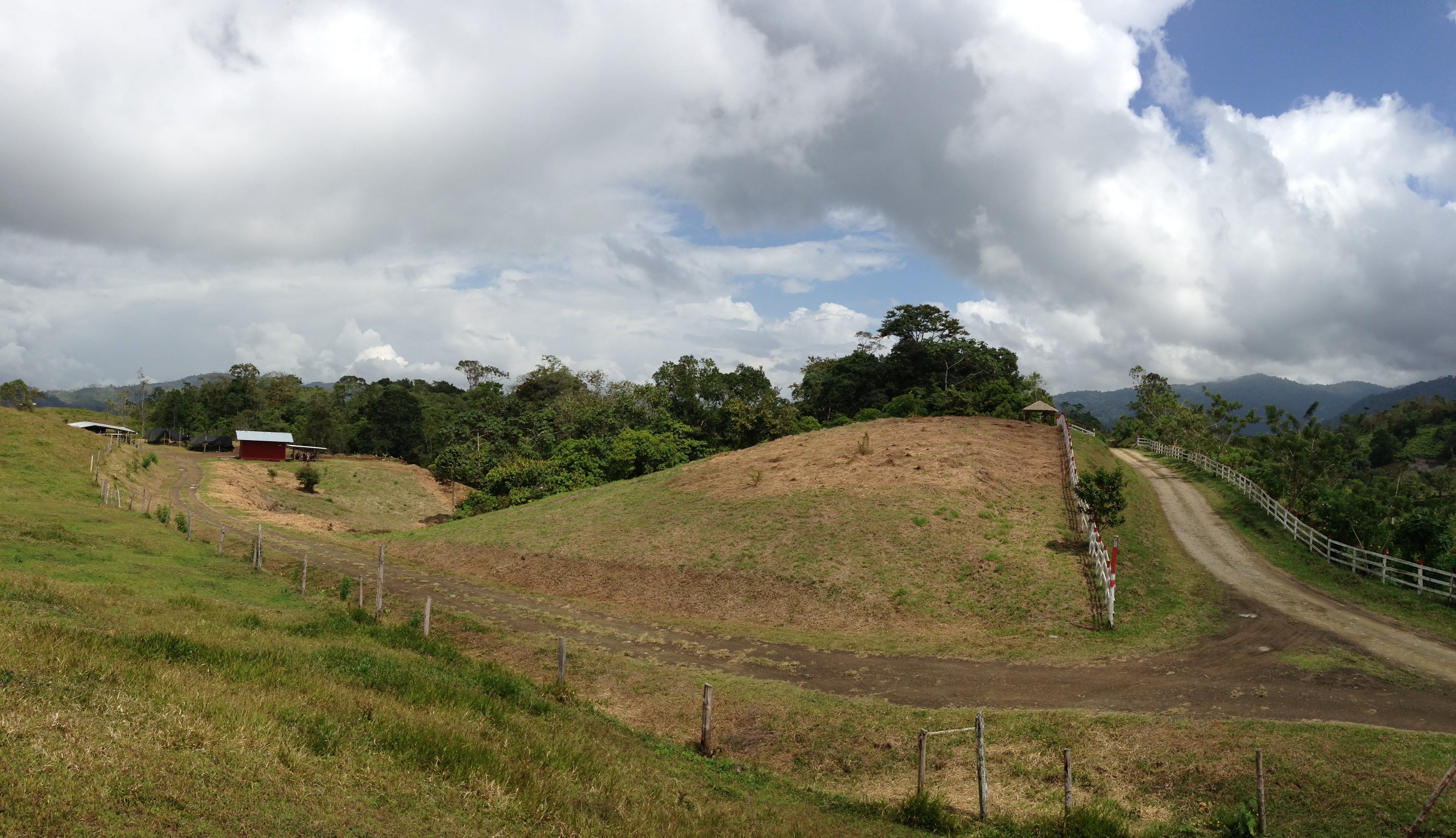
Before
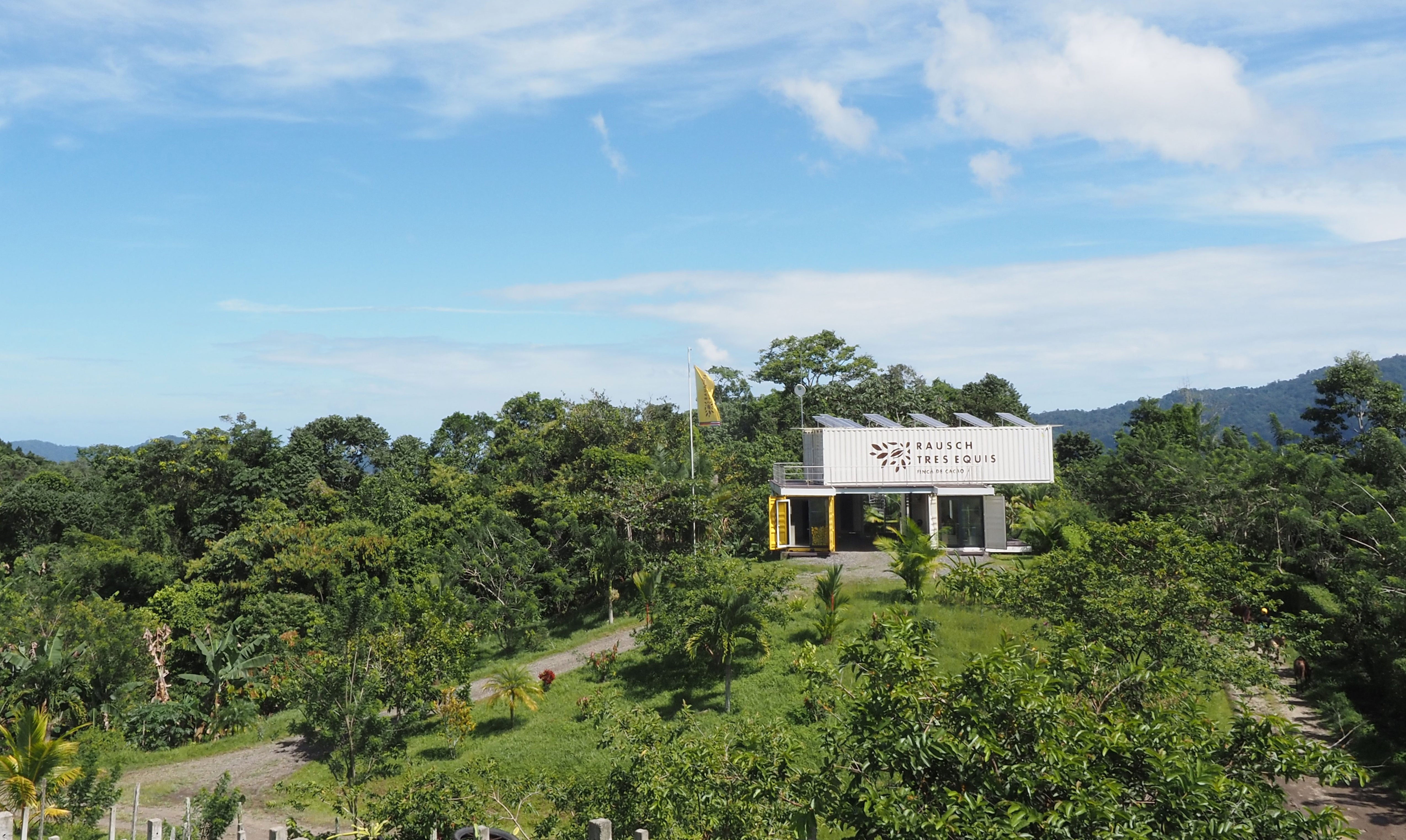
Afterwards
Our team on site
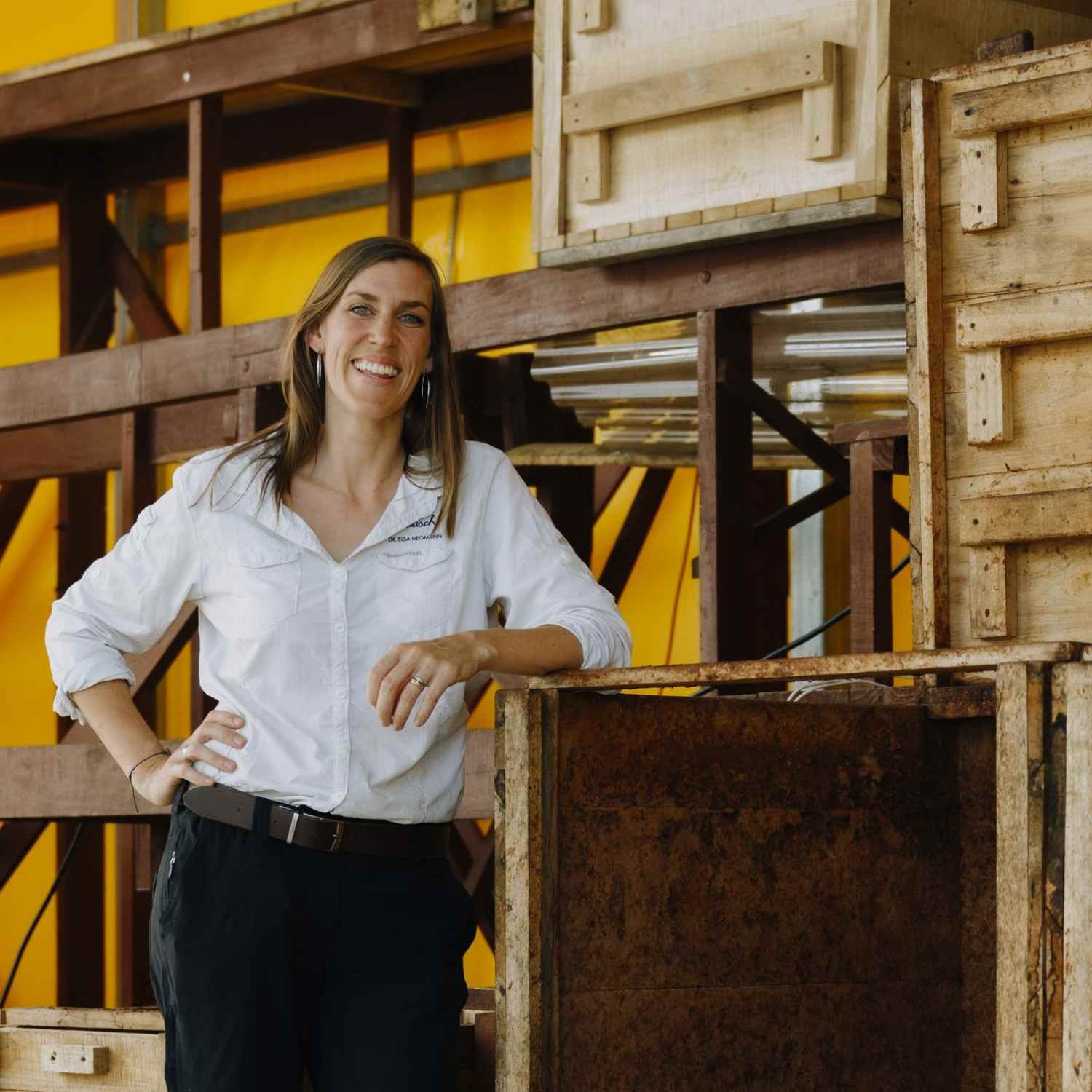
Dr. Elsa Hegmann
"Hello, I'm Dr. Elsa Hegmann - cocoa expert and biologist. I run the fine flavour cocoa institute here in Costa Rica and am responsible for post-harvest management and quality testing of our fine flavour cocoa batches. I also collect important field data in our agroforestry systems. Together with Dr. Christina Rohsius we develop international research projects."
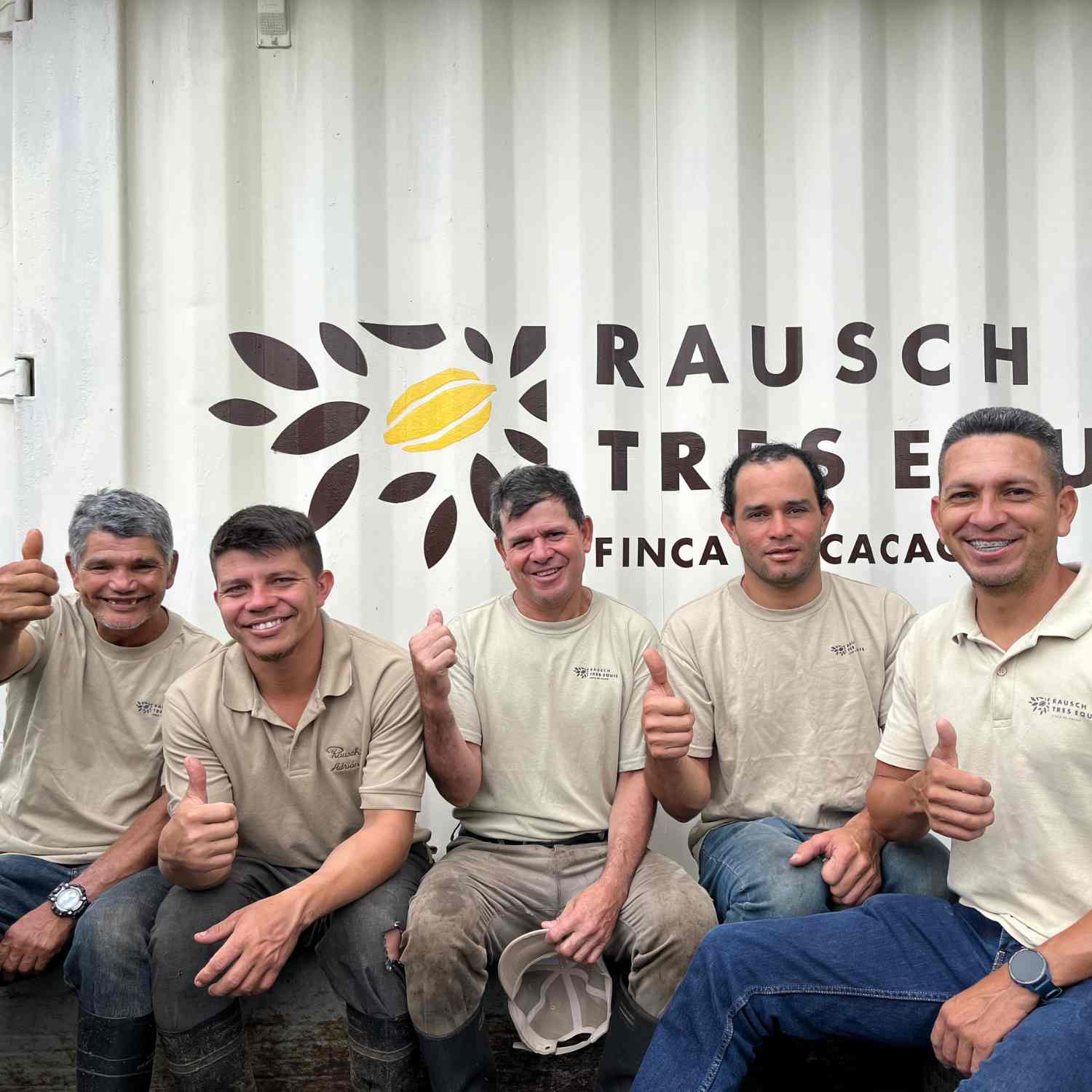
Edward Pérez & Team
This is our great team at 'Tres Equis - Finca de Cacao' in Costa Rica! Every day, our foreman Edward Pérez and 6 field workers look after the well-being of our fine flavour cacao trees. As they grow in various mixed systems, they also look after the shade trees and maintain soil fertility by applying organic fertilizer. Two other employees carry out the post-harvest processes and prepare the fine flavour cocoa beans for export.
Dr. Elsa Hegmann
"Hello, I'm Dr. Elsa Hegmann - cocoa expert and biologist. I run the fine flavour cocoa institute here in Costa Rica and am responsible for post-harvest management and quality testing of our fine flavour cocoa batches. I also collect important field data in our agroforestry systems. Together with Dr. Christina Rohsius we develop international research projects."
Edward Pérez & Team
This is our great team at 'Tres Equis - Finca de Cacao' in Costa Rica! Every day, our foreman Edward Pérez and 6 field workers look after the well-being of our fine flavour cacao trees. As they grow in various mixed systems, they also look after the shade trees and maintain soil fertility by applying organic fertilizer. Two other employees carry out the post-harvest processes and prepare the fine flavour cocoa beans for export.


Inhabitants of the fine flavour cocoa plantation
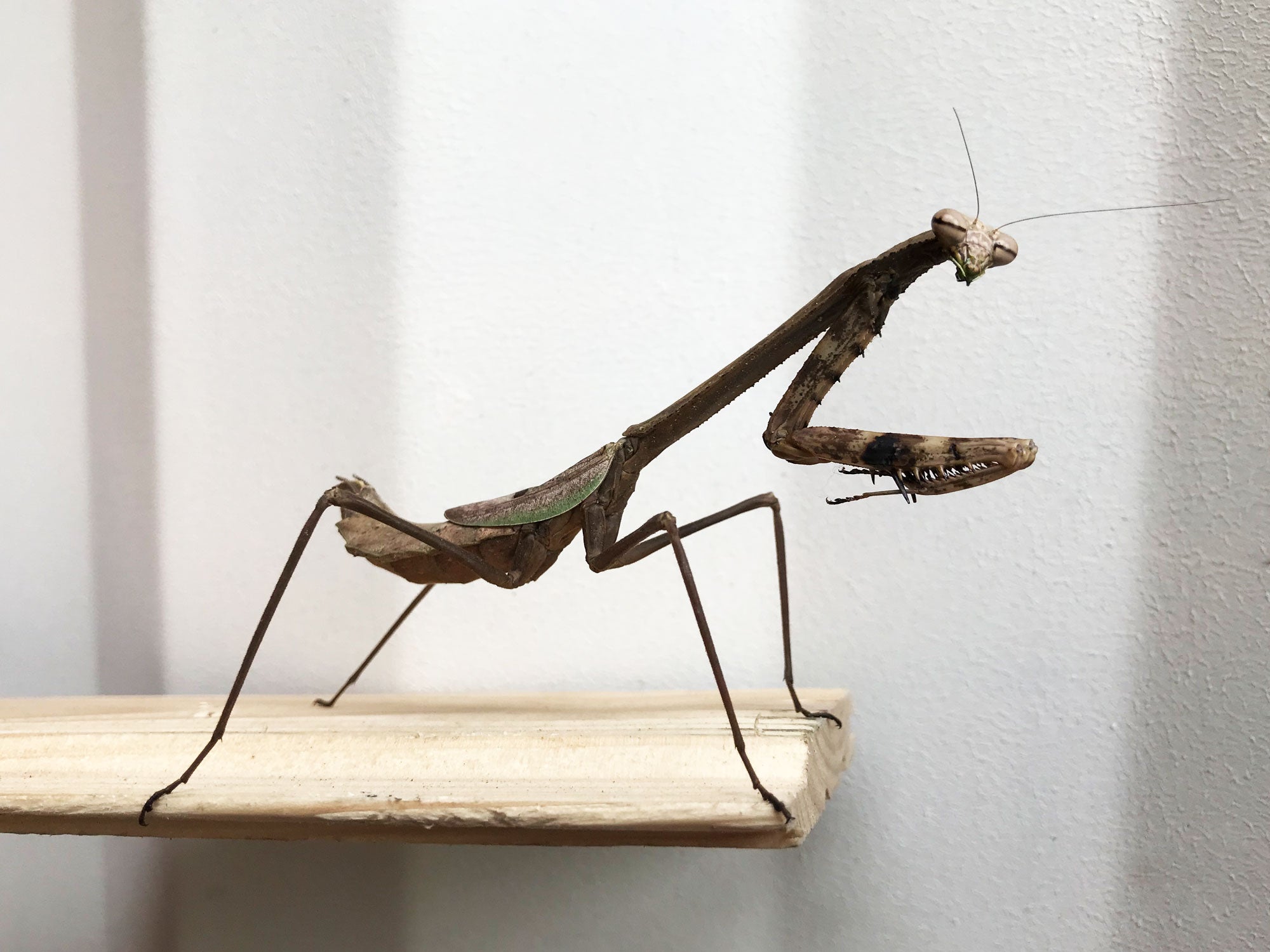
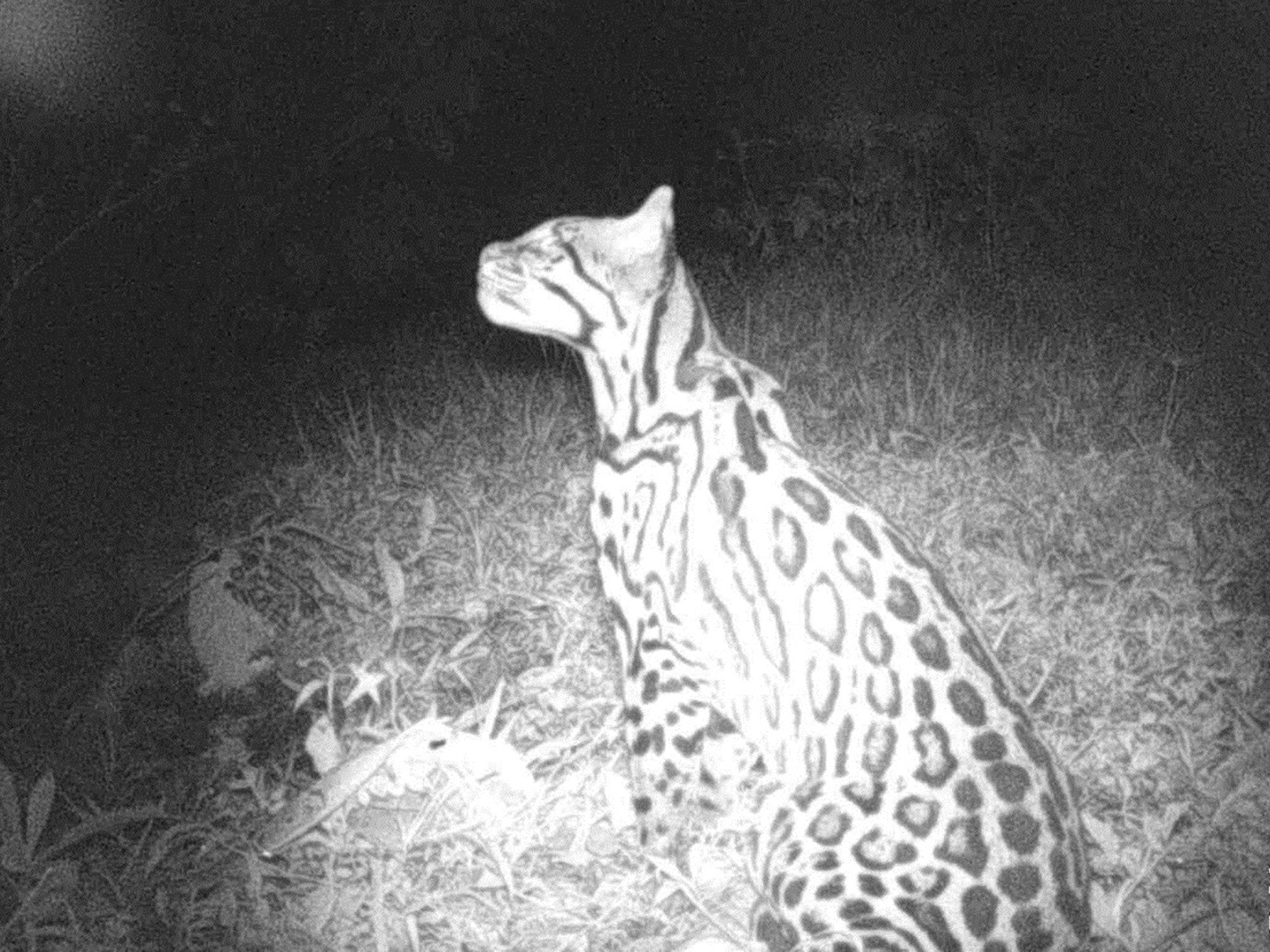
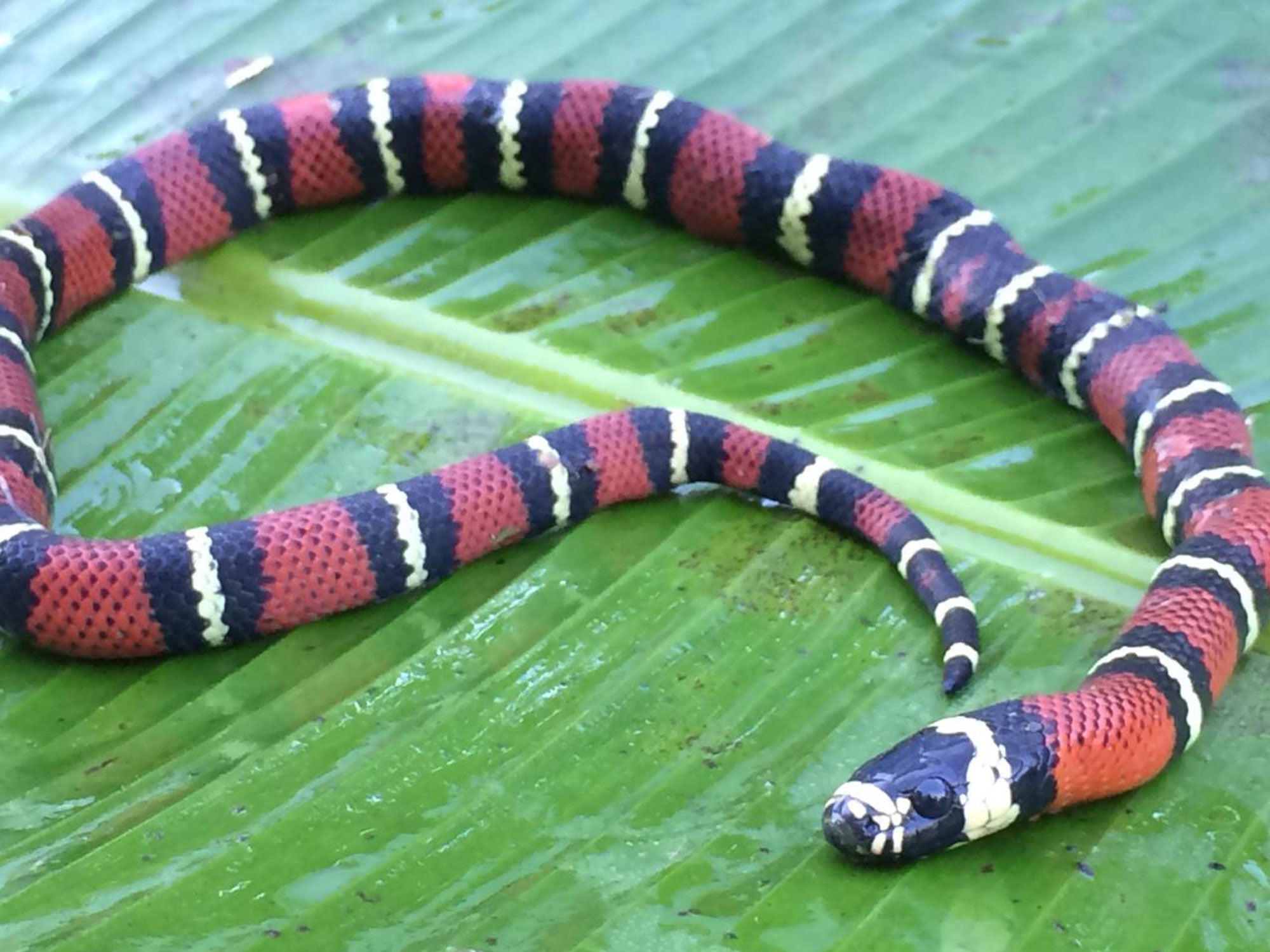
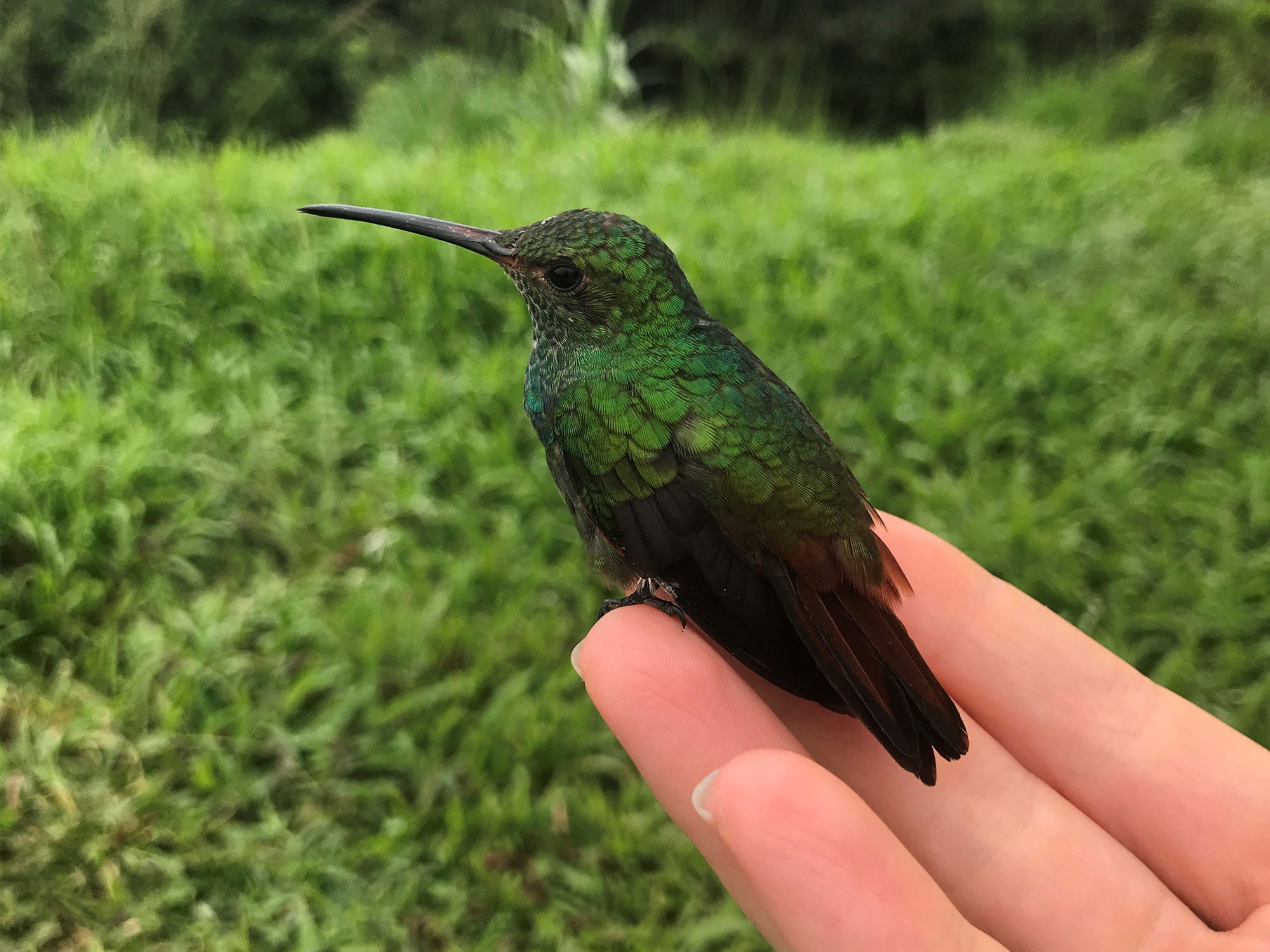
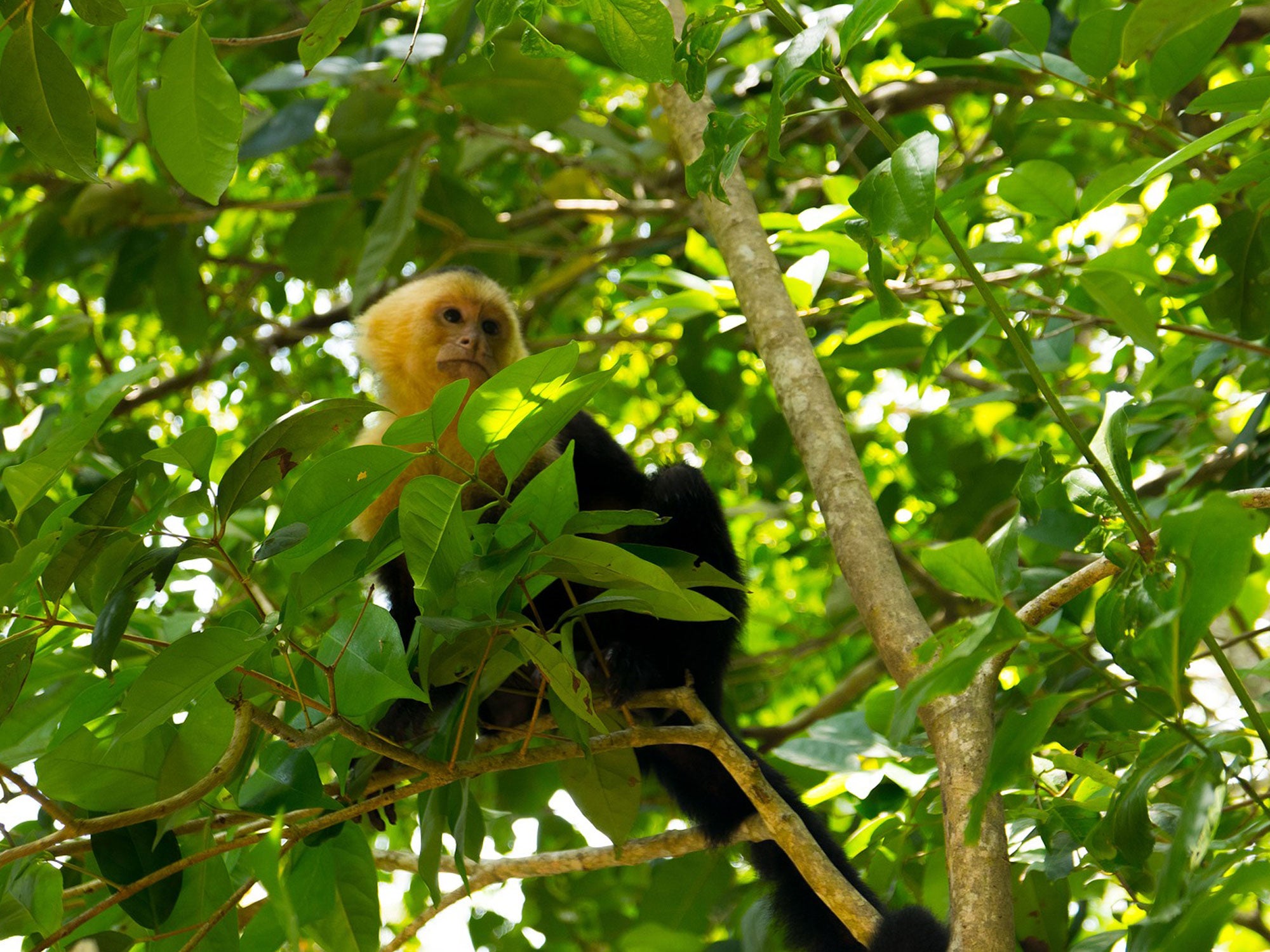
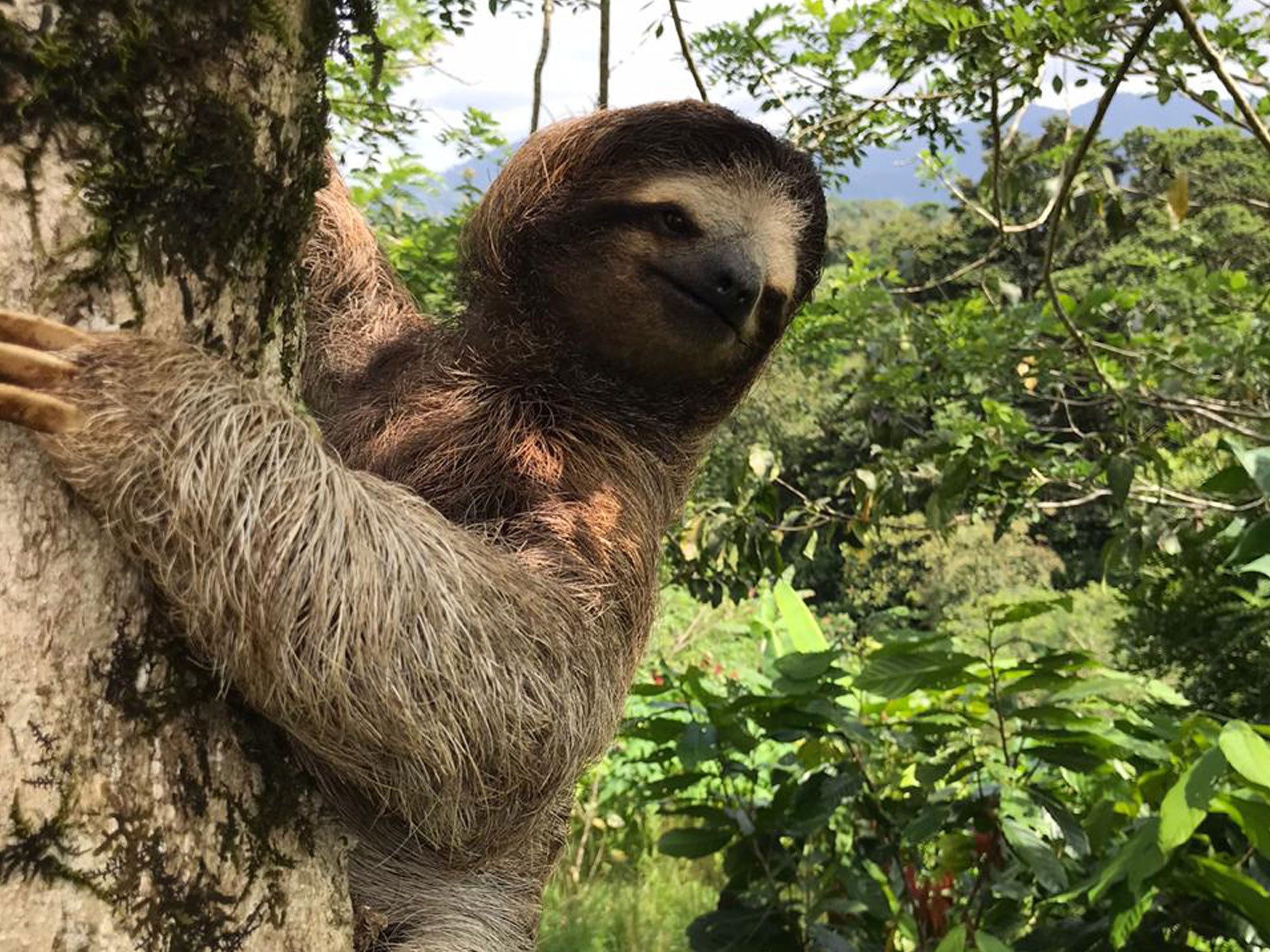
Costa Rica is one of the most biodiverse countries in the world, with over 500,000 different animal species living in the tropical forests - including on our fine flavour cocoa plantation.
Sloths spend most of their lives in the branches, where they feed on leaves and fruit. Their slow metabolism allows them to go for long periods without food, and their thick fur provides protection from the elements. The presence of these charming creatures contributes to the stunning biodiversity on our plantation and reminds us of the importance of preserving these unique habitats.
These pictures, taken by our team on site, show the beauty and serenity of the animals in their natural environment.
One of the most fascinating inhabitants is the white-headed monkey. These lively and intelligent primates are an important part of our plantation's diverse wildlife.
White-headed monkeys are known for their curious and playful nature. They move skillfully through the treetops, always on the lookout for food such as fruit, insects and small vertebrates. Their social structures are complex, and they live in groups characterized by close bonds and strong communication.
These impressive animals contribute to the biodiversity of our plantation and are a sign of the health of the ecosystem. The protection and preservation of their natural habitat is of utmost importance to us.
Hummingbirds are known for their dazzling colors and incredible flying ability. With their rapid wing beats, they can hover in the air, fly backwards and flit from flower to flower at lightning speed to drink nectar. Their high energy requirements and precision in flight make them fascinating creatures that are always on the move.
On our plantation, hummingbirds contribute to the pollination of many plants and play an important role in the ecological balance. Their presence is a sign of the health and diversity of the habitat. The protection of these little jewels of nature is particularly important to us.
One of its remarkable inhabitants is the Corallus Falsus, also known as the false coral otter. It is known for its bright colors and its resemblance to the venomous coral viper, which has earned it the name "false coral viper". Despite its menacing appearance, it is non-poisonous and poses no danger to humans. Their magnificent colors and lithe physique make them an impressive sight in tropical forests.
These snakes are skillful hunters and feed mainly on small mammals, birds and other small animals. Their ability to move skillfully through the dense undergrowth helps to maintain the ecological balance on our plantation.
One of the majestic inhabitants of our plantation is the ocelot. This impressive feline predator is known for its striking fur pattern, which gives it a distinctive and unmistakable appearance. With its large, expressive eyes and smooth movements, the ocelot is a fascinating sight and a real feast for the eyes of nature watchers. Their diet includes a variety of animals, including small mammals, birds and reptiles. This diverse diet helps to maintain the ecological balance in their habitat.
Another remarkable feature of the ocelot is its adaptability to different habitats. It can be found in dense forests, but also in open grasslands and scrub areas. This adaptability allows it to survive and thrive in different parts of Costa Rica.
The Mantis Religiosa, commonly known as the praying mantis, is a fascinating insect found in tropical and temperate regions around the world. It belongs to the mantis order (Mantodea) and is famous for its characteristic posture and predatory behavior.
Another remarkable feature of the praying mantis is its mating behavior. During mating, the female may eat the male, a phenomenon known as sexual cannibalism. However, this behavior is not observed in all species.
It plays an important role in the ecosystem by helping to control pest populations.
The year 2023 was particularly challenging for us on our plantation. The climate crisis is also making itself felt here - harvest cycles are shifting and pests are on the rise. There was an unusually high amount of rain this year in normally dry months, which delayed the flowering and fruit set of our fine flavour cocoa trees.
These effects present us with challenges that we are tackling with a scientific approach. A major research project has just been completed, in which the growth and survival curves of our cocoa fruits were examined over a period of months.
Our own fine flavour cocoa plantation 'Tres Equis - Finca de Cacao' in Costa Rica wins the Cacao of Excellence Award 2023.
The Cacao of Excellence Award gives global recognition to producers and honors the diversity of flavours in cocoa like no other. In the next round, a jury of experts will evaluate all the raw cocoa samples nominated worldwide from a sensory perspective and will then award prizes to the best of the best in Paris.
We won the pre-selection and qualified with the fine flavour cocoa from our plantation in Costa Rica. The decisive factor is the aroma profile of the cocoa mass, which is analyzed and evaluated by a panel of experts. Our fine flavour cocoa was unanimously convincing.
We are happy and proud of this success and treat ourselves to a piece of 'Costa Rica 84%' to celebrate. 'Costa Rica 84 %' to celebrate.
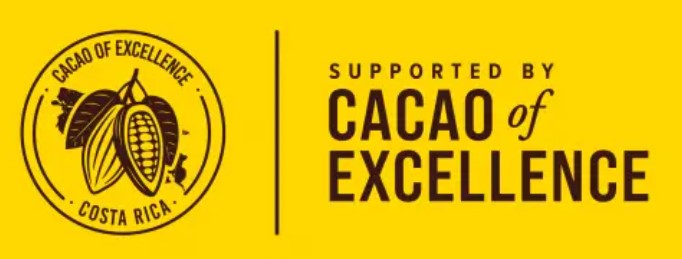
Dark fine cocoa chocolate in its purest form made from cocoa and cane sugar.
›Rausch Plantagen Costa Rica 84 % Cuvée Prestige‹



